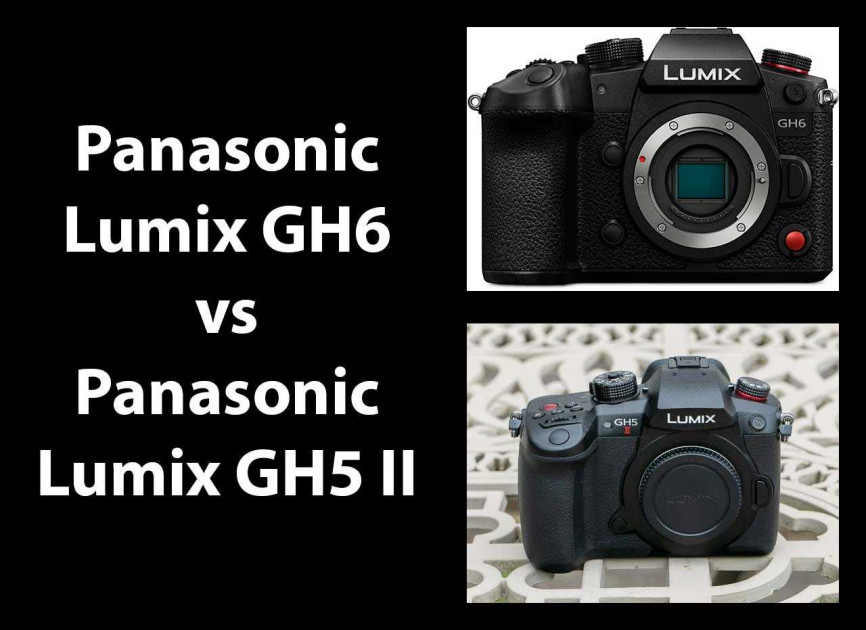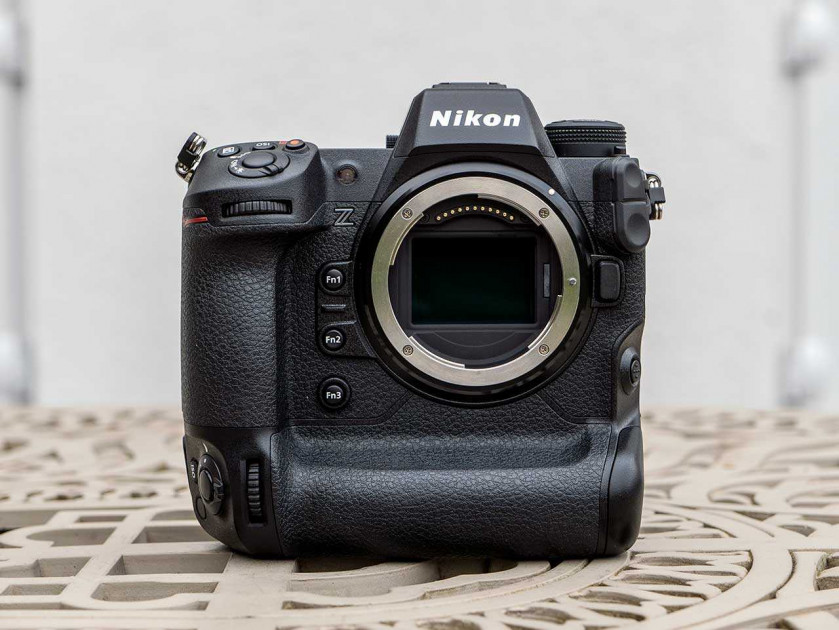
Introduction
In 2020 Nikon launched the D6, their top-of-the-range 35mm full-frame DSLR camera designed for professional sports, wildlife and news photographers.
Fast forward to 2022, and we now have the mirrorless equivalent – the FX-format Nikon Z9, which in many ways exceeds even what the mighty D6 is capable of.
Nikon haven’t officially said that the D6 will be their last ever professional DSLR, but after having used the Z9 extensively, it’s safe to say that this new mirrorless model has what it takes to carry on the mantel of being the company’s flagship camera, whatever technology it uses.
Canon have also similarly transitioned their pro camera from DSLR to mirrorless technology recently, with the EOS-1DX Mark III being effectively replaced by the EOS R3.
The Nikon Z9 is priced at £5299 / $5499 body only.
In terms of the Z9’s main rivals, they primarily include the Sony A1, Sony A9 II and the Canon EOS R3.
Read on for our full Nikon Z9 review, complete with full-size sample photos and videos for you to download and evaluate.
Ease of Use
We’ve been testing a full-production Nikon Z9 camera for the last few weeks, paired with several lenses including the Z 24-120mm f/4 S and the Z 100-400mm f/4.5-5.6 VR S.
Both the R3 and the Z9 have a very clear focus on out-and-out speed, but whereas the Canon model sacrifices resolution in order to achieve its 30fps burst shooting speed, the Z9 manages to hit the same headline-grabbing frame rate despite using a much higher resolution 45.7 megapixel sensor.
There is one important caveat to bear in mind though – whereas the 24 megapixel Canon R3 can shoot in both JPEG and Raw formats at 30fps, the 45 megapixel Nikon Z9 can shoot in JPEG format at 30fps, but “only” 20fps when recording Raw files.
On a more positive note, the Z9 can take over 1000 Raw files in a single burst before the camera slows down, equivalent to around 50 seconds of recording time, which is a frankly incredible achievement and one that may actually be more useful than the extra 10fps that the R3 offers, especially as the Canon camera has a much more modest 100 shot buffer.
If 20fps for Raw and 30fps for JPEG isn’t fast enough for you, the Z9 has an ace up its sleeve in the form of an impressive 120fps shooting rate when recording 11 megapixel stills. Perhaps more impressively, all of the Z9’s continuous shooting modes are with full AF/AE tracking, even the 120fps mode.
The D6 DSLR, meanwhile, can shoot at burst rates of up to 14fps for up to 2000 Fine quality JPEGs, no mean feat but over twice as slow as both the R3 and Z9 when using JPEGs.
So how exactly do these mirrorless cameras up the speed ante? Those 30fps rates are achieved by using the camera’s electronic shutter – the R3 has a much more modest 12fps burst rating when using its mechanical shutter.
And the Nikon Z9? Well, that doesn’t even have a mechanical shutter inside it, instead relying on using an electronic shutter for all of its capture modes.
The Z9 is one of the very few cameras on the market that entirely forgoes a mechanical shutter – the Sigma fp series is the only other one that we’re aware of, and that has a very clear focus on being a video camera first and foremost.
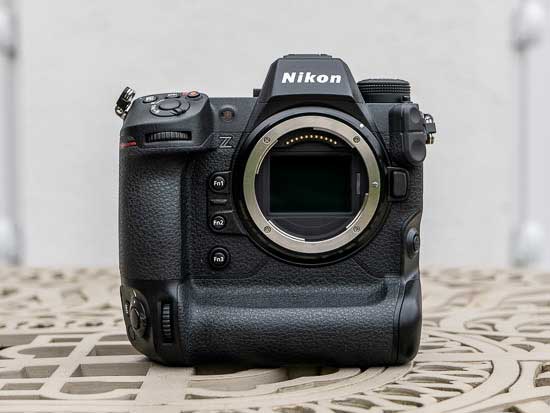 |
The Nikon is billed much more as an all-rounder aimed at both professional stills photographers and videographers, so the complete omission of a mechanical shutter is a very brave decision indeed.
Electronic shutters typically suffer from “rolling shutter” when capturing fast-moving subjects, but Nikon are convinced that they’ve overcome that issue in the Z9 thanks to its combination of a stacked sensor, the very latest Expeed 7 processor which offers processing speeds approximately 12x faster than the Z7 II, and the use of CFexpress Type B memory cards. They’re so convinced that they haven’t even included a mechanical shutter inside the Z9 as a backup.
That decision has a lot of knock-on benefits for Z9 shooters – the camera is essentially silent, so much so that you can choose from a variety of artificial shutter sounds and volumes in order to get some feedback about what it’s actually doing.
With no reliance on a moving mechanical part, there’s less to go wrong, essential for a camera that is undoubtedly going to have a hard life – forget having to worry about maximum shutter cycles with the Z9.
And despite the absence of a mechanical shutter, flash sync up to 1/200 sec. is still supported, which is nearly as fast as the D6’s 1/250 sec. sync speed and indeed as fast as most mechanical shutters, as well as Nikon’s usual array of high speed sync functions.
The Stacked BSI CMOS sensor provides a native ISO range that runs from 64-25,600, which can be expanded to ISO 32-102,400, and the top shutter speed is 1/32,000 sec. thanks to that electronic shutter.
The Canon R3 has an even higher ISO speed of 204,800 and a faster maximum shutter speed of 1/64,000 sec, slightly beating the Z9, but then it does offer a much more modest resolution.
Where the Nikon Z9 does have an edge over its most obvious rival is video resolution. This is the first ever Nikon camera to offer 8K recording – UHD 8K 30p video can be continuously recorded with no crop for approximately 2 hours 5 minutes, whereas the Canon R3 is limited to 6K Raw recording.
If you’re primarily interested in 4K UHD, the Z9 offers that with a variety of frame rates up to 120p slow-motion, again using the entirety of the frame with no crop factor, and 4K UHD video oversampled from 8K is possible when recording in the 30p/25p/24p modes for even greater sharpness and detail.
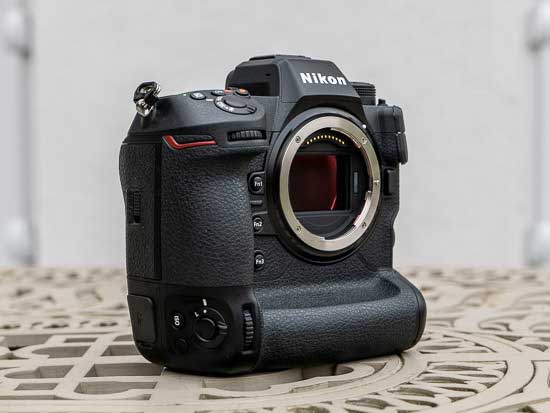 |
Internal recording with 10-bit color and 4:2:2 sampling is supported via the ProRes 422 HQ and H.265 codecs, and you can extract high-resolution still frames from 8K footage and save them as individual 33 megapixel JPEG files.
There is up to 6-stops of 5-axis image stabilisation available via a combination of the camera’s in-body Image Stabiliser which, for the first time on a Nikon Z-series camera, works in tandem with the attached lens’s own stabilisation system.
The Nikon Z9 has a blackout-free 3690k-dot electronic viewfinder with 60fps refresh rate, 100 per cent coverage and 3000-nit brightness, and a four-axis vertically and horizontally tilting 3.2-inch, 2,100K-dot touch-screen LCD screen.
The 493-point phase-detection AF system that’s used when shooting video or in Live View includes 405 auto-area AF points, refreshes at up to 120 fps and works down to -8.5 EV in the special Starlight mode, with 10 different AF-area modes available.
The Z9 can recognise nine different subject types including people, animals, birds and vehicles, whilst the company’s most advanced 3D-tracking system makes its debut in a Nikon mirrorless camera.
There’s also dual CFexpress Type B memory card slots, built-in Wi-Fi, Bluetooth and GPS, and integrated USB 3.2 Type-C, full-size Type A HDMI, headphone, microphone, 10-pin remote/accessories, and 1000BASE-T Ethernet ports.
The Nikon Z9’s magnesium alloy body is both dust- and weather-resistant, just like the D6, with both cameras offering the same level of weather-proofing as each other.
Just like Canon with the EOS-1DX III and EOS R3, in the last couple of years Nikon have released not one flagship action camera in the form of 2020’s D6 DSLR, but two with the 2022 unveiling of the Nikon Z9 mirrorless model.
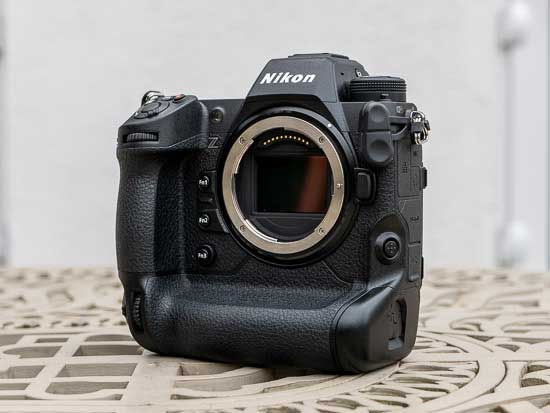 |
Both of these models are specifically targeted at sports and wildlife photographers and videographers who prioritise speed of shooting and operation above all else, making the new Z9 a more niche proposition than, say, the Z7 II.
Viewed side-by-side, it’s immediately clear that the latter owes an awful lot to both the D6 in terms of its overall design, albeit in a significantly smaller and lighter package, and also to the Z7 II in terms of its external control layout.
Subsequently the Z9 is slightly lighter than the D6, weighing in at 1160g / 2lb. 9oz. body only or 1340g / 2lb. 15.3oz. with battery and memory card fitted versus 1270g / 2lb. 12.8oz. and 1450g / 3lb. 3.2oz. respectively on the DSLR.
It’s smaller too, measuring 149 x 149.5 x 90.5mm / 5.9 x 5.9 x 3.6in. versus the 160 x 163 x 92mm / 6.3 x 6.5 x 3.7in. dimensions of the D6.
So although both cameras share the same integrated-grip design that’s long been followed by the flagship D-series, the new Nikon Z9 is smaller, lighter and therefore more usable for longer periods as a result.
Indeed, the fact that it’s not that much bigger and heavier than a Z7 II with a MB-N11 Power Battery Pack with Vertical Grip attached means that you should only discount the Z9 if you really want to have the option of temporarily removing some of its bulk.
In practice, I found it almost as easy to handle the Nikon Z9 for longer periods of time as any semi- or pro- camera with a battery grip attached, and being completely integrated into the overall design, there’s no unwanted flex or movement that’s inherent to cameras with optional battery grips attached.
Another direct benefit is that the Z9 benefits from having a very deep handgrip that comfortably accommodates four fingers, something that can’t be said of some of its main rivals.
At the heart of the Nikon Z9 is a brand new 45.7 megapixel sensor with, for the first time ever on a Nikon camera, a stacked design that has been developed exclusively by Nikon.
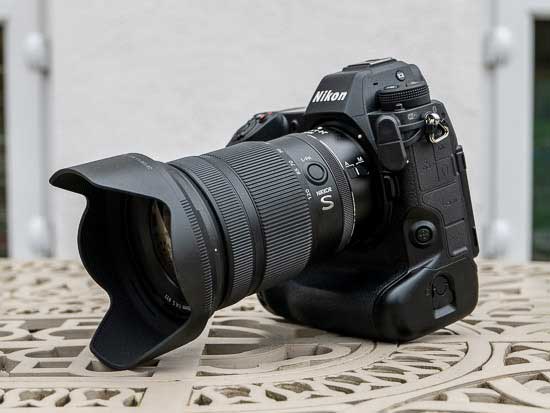 |
Sony users have of course enjoyed the benefits of a stacked design for several years now, since the launch of the original Alpha 9 in 2017, so it’s great to see Nikon catching up with one of their main rivals.
This allows you to use the Z9’s exclusively electronic shutter to freeze fast movement without worrying about rolling shutter distortion whilst enjoying a black-out free, 3690k-dot, 0.8x-magnification OLED electronic viewfinder that refreshes at 60fps, perfect for tracking your subject whilst shooting at up to 30fps.
A couple of those key specs don’t compare that favourably to the EOS R3 and Sony Alpha A1 – the EVF has less resolution than its main rivals, and the refresh rate is half that of the R3 and A1.
In practice, the fact that the Z6 makes full use of its more modest EVF resolution all of the time, for both liveview and playback, means that it provides a very similar experience to the R3 and Alpha 1, which temporarily lower the resolution for liveview. And while 60fps doesn’t sound great on paper compared to its main rivals’ 120fps refresh rate, again in real world use you’d be hard-pressed to tell the difference between them, feeling very responsive and consistent in any situation.
The magnesium-alloy bodied Nikon Z9 has an overhauled AF system and sensor that offer even better AF tracking performance, image quality and communication capabilities than the D6 camera.
Starting with the headline-grabbing continuous shooting speeds, that’s certainly true when taking advantage of the camera’s completely silent electronic shutter, which ups the ante from a relatively modest 14fps on the D6 to a blistering 30fps on the new Nikon Z9, complete with full AF and AE tracking.
The camera’s buffer allows bursts of up to 1000 JPEG frames at either 30 or 20fps or 160 Raw/JPEG images at 20fps at 45.7 megapixels with the latest firmware update, which is mightily impressive for such a high-resolution camera.
Being able to continuously shoot 8 seconds of 45 megapixel RAW files at 20fps or 50 seconds of full-sized JPEG files at the same rate using a completely silent shutter should certainly please all but the pickiest of customers.
To cope with modern data hungry demands, the camera uses the latest generation CFexpress Type B memory card format, which share the same outer design as XQD cards that the camera also supports, but they have faster memory inside. If you want to take full advantage of the insane shooting speeds that the Z9 offers and you don’t already have a bag full of XQD cards, then we’d advise investing in CFexpress Type B memory cards from the outset to get the best out of the camera.
Unlike the EOS R3, which has a second card slot reserved for slower UHS-II SD cards, Nikon have gone all in on the Z9 for CFexpress Type B, a move that is perfectly suited to the camera. As we’ve already mentioned, the memory card format is an important part of the Z9 as a whole, supporting the 8K video recording, burst shooting and speedy performance, and it’s likely that having a UHS-II SD would have resulted in some compromises having to be made to accommodate it.
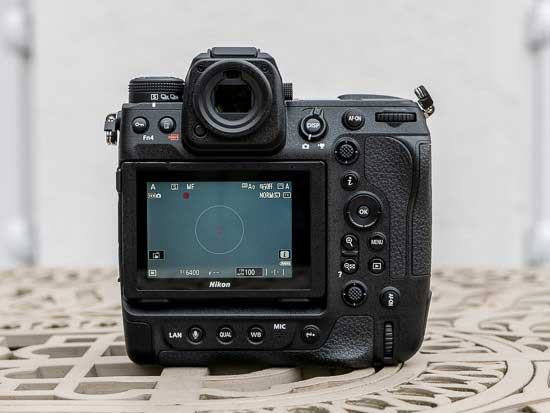 |
It’s no use having all of that raw speed at our fingertips however if the camera falls down in other important respects. Battery life is, however, fortunately as robust as the camera’s outer shell.
With the brand new rechargeable EN-EL18d cell that’s more powerful than the EN-EL18c battery used by the D6 inserted, it’s claimed that 700 shots maximum are achievable from a full charge. That doesn’t compare all that well with the whopping 3580 battery life offered by the D6, but then that lifespan is applicable when only using the D6’s optical viewfinder.
Note that any previous EN-EL18 series battery can still be used in the Z9, but the older models won’t offer the same 700-shot battery life offered by the new EN-EL18d.
Even if users are shooting mainly in the Nikon Z9’s 30fps burst mode, it will still take some time to rattle through its battery life, as the quoted CIPA figures are very conservative. Plus you can always pack a spare battery or three if heading out for the day or as back-up when covering a major event.
The Z9 features Nikon’s most advanced auto-focusing system, surpassing even the mighty D6 and more than matching its main mirrorless rivals.
It has a 493-point phase-detection AF system which includes 405 auto-area AF points, with 100% frame coverage. Impressively the Nikon Z9 can focus in light levels as low as -8.5EV when used in the Starlight mode, the best of any current Nikon mirrorless camera.
Thanks to its Expeed 7 processor, the Nikon Z9 offers a range of deep-learning artificial intelligence based AF tracking modes that are similar to the ones found on the Canon EOS R3.
The Z9 can recognise and track eyes that are much smaller in the frame than previous models, and it works even if the person is wearing a mask, helmet or sunglasses. Subject tracking works for humans and also dogs, cats and birds, the latter even in flight.
The Nikon Z9 also has the ability to track vehicles, including planes, trains, bicycles and motorbikes. What’s more, if the driver is wearing a helmet, the AF system will lock on to that, ensuring that the most important subject is in focus.
A major difference between the Nikon Z9 and other similar systems from Canon, Olympus and Sony is that the Z9 additionally offers an ‘Auto’ subject mode that can reliably recognise the correct subject, so that you don’t have to manually switch between them. You can still do that if you want to make sure that the camera only detects a certain subject, but for most occasions the Auto mode does a fine job.
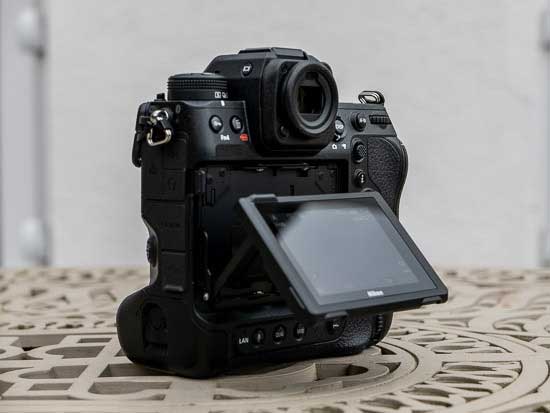 |
In addition to the extensive range of deep-learning AI subject recognition algorithms, Nikon have added another welcome feature to the Z9 in the form of 3D tracking, something that has long been a mainstay on the company’s DSLRs.
Thankfully, it works just as well and in the same way, drawing a grey square box around the subject and tenaciously tracking it when you’re using the C-AF mode. In fact, it’s even better than on, say, the D6 as it now works across the entire frame rather than just in the centre, and it’s even more reliable when used in conjunction with the subject recognition settings.
Whereas the D6 only offered digital image stabilisation for movies, the Z9’s excellent in-body five-axis image stabilisation system provides up to 6 stops of compensation when paired with certain Z-series lenses that also have their own built-in Vibration Reduction (VR) system.
In-body stabilisation is one of the key benefits of mirrorless versus DSLRs in general and therefore also one of the key reasons to choose the Z9 over the D6.
It has now been designed to work collaboratively with the VR system that’s built into several Z-mount lenses, with the lens and the sensor working together to correct pitch and yaw and the sensor correcting the X-Y and roll movements.
This intelligent Synchro VR mode provides 6-stops of stabilisation with some lenses (the Z MC 105mm F2.8 VR, Z 100-400mm F4.5-5.6 VR S and Z 70-200mm F2.8 VR S), allowing you to hand-hold the camera for up to 2 seconds and still get critically sharp results.
The Nikon Z9 can also stabilise older, non-VR lenses including any F-mount lens that is mounted on it via the Nikon FTZ mount adapter.
The stabilisation system will also work with lenses from other manufacturers – you just need to input the focal length into the camera’s menu system.
In practice, the Nikon Z9 stabilisation system is excellent, making it possible to hand-hold the camera at previously impossibly slow shutter speeds and still maintain critical sharpness.
For shooting at night or in low light, users get incrementally selectable sensitivity settings running from an expanded ISO 32 to ISO 102,400, selected via the rear command dial, with a familiar LCD window on the top plate detailing the selection made.
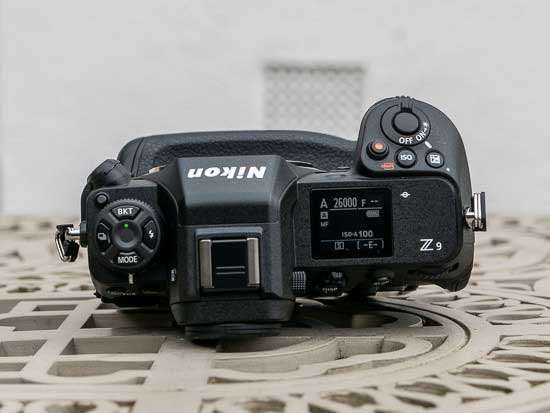 |
That’s an impressively broad selection, especially as images at the boosted settings are still usable, something that couldn’t be said about the D6, where if you strayed above the non-expanded ISO 102,400 option to the likes of the frankly mad ISO 3,280,000 setting, results were largely unusable.
File format wise, the Nikon Z9 supports both RAW and JPEGs, but unlike Sony and Canon, not the ‘next generation’ HEIF (High Efficiency Image File) file format, which images with 10-bits of data to be saved in a file the equivalent size of a JPEG, while suffering less compression.
Of course, Raw files can be shot in tandem with JPEGs as per usual – here with Nikon’s own .NEF file extension, which requires the likes of Photoshop or Lightroom to access and open.
Nikon have introduced the brand new High Efficiency RAW file format on the Z9, which retains the same level of detail as an uncompressed RAW but crucially at either half or one-third of the standard RAW file size. This allows for both faster reading/writing to the memory card and less storage space being required, crucial requirements given the large 45 megapixel files that the camera generates.
For video specialists the Nikon Z9 boasts uncropped 8K/30p 10-bit internal recording to a CFexpress card using H.265 (HEVC) or 10-bit Apple ProRes 422 HQ, making it one of the very few cameras on the market to offer 8K recording.
Although not available at launch, Nikon have promised to deliver a free firmware update in Spring 2022 that will enable the Z9 to record RAW 8K video in ultra-smooth 60p. The same update will also enable 12-bit in-camera recording that supports ProRes RAW HQ and Nikon’s new N-RAW format.
There’s also uncropped 4K DCI and UHD 10-bit recording at frame rates between 24 and 120fps slow-motion in the MP4 format, and even sharper and more detailed UHD 4K recording is possible at up to 30p by oversampling the sensor’s 8K native output.
The Z9 has a 10-bit N-Log setting as well as a Flat color profile for more latitude when color grading, and HLG (Hybrid Log Gamma) is supported for in-camera HDR-content.
The Z9 supports recording times of up to 2 hours 5 minutes with no overheating, and it features mic and headphone ports and a full-sized HDMI Type-C port for output to an external recorder.
The Z9 is the latest Nikon camera to have built-in IEEE 802.11b/g/n/a/ac Wi-Fi (5 GHz and 2.4 GHz) and Bluetooth 5.0. There is also a built-in GPS module which is also compatible with GLONASS (Russia) and QZSS (Japan) and it also features a 1000BASE-T Ethernet interface and RJ-45 port for a fast and secure hardwired connection.
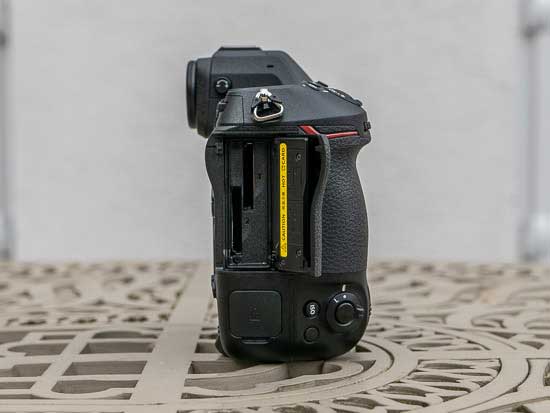 |
Most of the buttons on the Nikon D6 could be illuminated if its display light button was pressed, allowing for users to better identify functions if working in near dark conditions, and it’s great to see that the new Nikon Z9 also inherits this very useful feature.
Taking the camera out of its box and affixing one of the two lenses that came with our review sample – an Z 24-120mm f/4 S and the Z 100-400mm f/4.5-5.6 VR S. – it’s immediately apparent that this is a large and not particularly discrete camera setup.
Investigating the front of the camera, the Nikon Z9 here appears almost identical to the D6, with a familiar pentaprism SLR shape and very solid construction that indicates this is a workhorse of a DSLR able to take a fair bit of a hammering in the line of duty.
Unsurprisingly given Nikon taking its common ‘if it ain’t broke don’t fix it approach’, the camera’s fascia very closely resembles the D6. It features a large and stiff lens release button nestled on the right.
Just below though is a brand new AF mode button that lets you choose both the AF mode and AF area mode during viewfinder shooting, using the front and rear command dials to toggle between the various options.
Over on the other side of the lens mount is a row of three function buttons, the positioning of which means that they fall beneath the fingers of the right hand when gripping the camera – though these may benefit those with larger hands as we found them a bit of an uncomfortable stretch to reach.
There are, however, a veritable plethora of customisable buttons on this camera, so you can pretty much configure it to have your favoured settings literally at your fingertips if you put the time in to set it up to suit you particular way of working.
You might completely miss it because it’s turned off by default, but the Z9 has a built-in sensor shield that protects the camera’s sensor when it is turned off, ideal for protecting it from fingerprints or when you’re changing lenses in dusty or dirty environments.
Moving to the top of the Z9, the left-hand-side looks like the D6 and the right-hand-side more closely resembles the Z7 II.
On the top left of the camera is where you can change the shooting mode (P, A, S, M – unsurprisingly there’s no auto on offer here), drive mode (Single, Continuous Low, Continuous High, Timer, and a customisable Continuous mode), bracketing mode, flash mode/compensation and release mode.
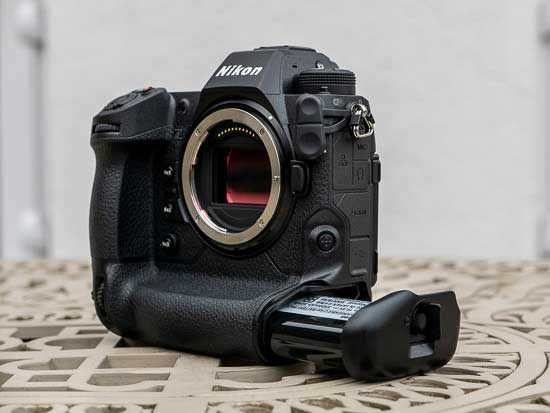 |
What we personally and also immediately missed here, compared to most pro and semi pro cameras, was a large, chunky tactile shooting mode wheel or dial to the left or right of the viewfinder.
Even if the shooting mode can be rapidly – and as it turns out, fairly conveniently – accessed via a press of the Mode button on top of the camera, just like on the D6, we’d still prefer a more traditional dial.
To the right of the viewfinder we have the top-plate LCD. This is extremely handy for showing you all of the key settings at a glance, such as aperture, shutter speed, drive mode, ISO, remaining shot count and battery life.
At the top of the front grip you’ll find the camera’s on/off switch, which surrounds the shutter release, along with a third option for illuminating the buttons. Just behind here there are three dedicated buttons, one for video recording, one for ISO and one for exposure compensation.
Finally, just above the rear thumb rest, you’ll find a familiar rear command dial, which can be used in conjunction with the dial on the front grip to control the camera’s key settings – depending on which shooting mode you’re in. In manual mode, the default set up is for the front dial to control aperture, while the rear dial is used to adjust shutter speed.
Now to move to the back of the camera, and again, if you’ve used a Nikon Z series camera before, or even a Nikon DSLR, you’ll be very at home here. If you haven’t, it’s fairly user friendly, being a relatively straightforward set up.
To the left of the viewfinder are the shared Lock/Fn4 button and the delete button. By default the Fn4 button allows you to set the Picture Control, but it can also be reconfigured to Playback if you’d prefer to exactly mirror the layout of the D6.
On the viewfinder itself, there is another button for adjusting how the viewfinder works – whether you want it to automatically activate, switch off the screen, or not have the viewfinder on at all. On the opposite side of the viewfinder you’ve got the diopter adjustment dial which you can use to align the viewfinder with your own vision.
The rest of the camera’s buttons are all grouped together on the right of the viewfinder / screen setup. It starts with a display button which, unsurprisingly, you can use to adjust how the rear screen display looks – including switching on/off shooting information, a histogram and a level.
You can also adjust the viewfinder display by pressing the same button while your eye is held up to the viewfinder. That means that you can have different display options depending on whether you’re using the screen or the viewfinder, if you like.
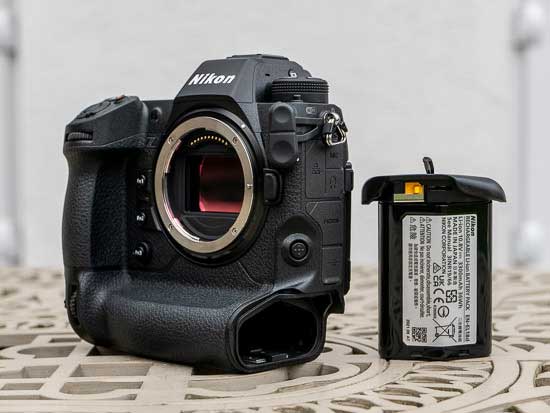 |
The Nikon Z9 departs from the blueprint of its DSLR-equivalent by offering a four-axis tilting monitor, whereas the LCD screen on the D6 is of the fixed, non-tilting variety.
Whilst not quite as versatile as a fully articulating, vari-angle LCD screen, the Z9’s screen works very well for both portrait or landscape-orientation shooting. You can tilt it upwards to face you in either mode, whilst still being centrally located which make it easier to compose with than a screen that flips out to the side.
An angle adjustable LCD is also useful if you’re going to be shooting video in the main, as it’s tricky to be 100% certain you’ve got focus spot on when using a fixed screen outdoors; inevitably glare and natural reflections sometimes get in the way.
On the flip side, with two hinges involved it is quite a complex bit of engineering that may in the long-term suffer from heavy use. Also, given that this is the sort of professional tool that will be used in spaces where it could get knocked and elbowed by competing photographers, a fixed screen is undoubtedly a wise decision, even if it makes video shooting without some sort of external monitor trickier than it could be.
Note that the Z9’s screen cannot be usefully folded flat against the back of the camera to protect it when in transit in a camera bag.
As mentioned above, the LCD screen is touch-sensitive, allowing you to control everything from setting the AF point and firing the shutter, navigating the menu systems and browsing your images during playback. It’s a very precise, responsive system that’s a veritable joy to use.
A proximity sensor is located directly above the viewfinder, which automatically switches between the EVF and LCD screen. When the LCD screen is swung outwards, the EVF is cleverly turned off automatically.
Around the Display button is a switch when you can use to move between video mode and stills mode. This switch is fairly stiff, so it seems reasonably unlikely you’d do this by accident – but if you do, it should be fairly obvious that you’re in the wrong mode.
To the right of the Display button is the AF-On button. You can set this up for back-button focusing if you prefer to work in that way, which will mean that if you press the shutter release, it won’t attempt to refocus again – useful for focusing and recomposing.
Just underneath the AF-On button is a joystick. You can use this to move the AF point around the frame, if you don’t want to use the touchscreen.
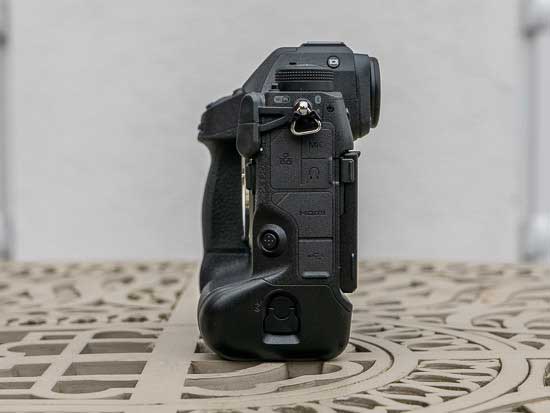 |
Unlike some other models on the market, you can’t use the viewfinder and touchscreen at the same time – so it’s very likely you’ll be using the joystick to make quick AF point changes.
The joystick can also be used to move around either the main menu or the quick menu, but you will first need to enable this option in the custom control settings section of the menu.
The quick menu itself can be accessed by pressing the “I” button just underneath the joystick. By doing so, you’ll presented with a group of commonly used settings, such as Picture Control, Quality, Drive Mode, AF-Area Mode, White Balance and more. You can navigate around the menu using either the joystick (if set up) or via the navigational pad just underneath the stick.
Once on the correct setting, press OK and then you can use the scrolling dials to choose between the various options. If there are any settings in this quick menu you find you don’t use very often, you can take them out and replace them with other settings which perhaps you use more frequently.
The four way navigational pad, with an OK button in the middle, can be used to move the AF point around the screen (if you don’t want to use the joystick/touchscreen), navigate the menus, to toggle the information display on images in playback, and to browse through said images. The OK button can be used for menu selection, but in shooting mode, you can also use it to reset the AF point to the centre of the screen.
Just underneath the navipad is a duo of buttons which can be used to zoom in and out of the scene you’re photographing – particularly useful for checking critical focus, especially if you’re using manual focus. You can also use the buttons when viewing images in playback to zoom in and out, as an alternative to using the touchscreen to pinch in and out of the frame.
To the right of the zoom out button, there’s the relocated Playback button. The Menu button is found above that, and it will take you into the camera’s main menu.
This is where you should head when you need to make more complex settings than the quick menu will prove you with. The menu itself is divided into a number of categories, which are fairly self-explanatory and easy to navigate around.
There are Photo Shooting, Video Recording, Custom Settings, Playback, Setup and Network menus. Handily, there’s also a “My Menu” tab which is where you can save any settings which you are frequently using so you can quickly get to them whenever you need them, rather than scrolling through the various pages of the menu.
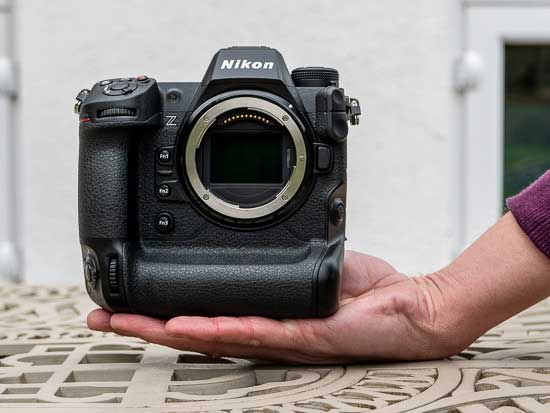 |
Directly underneath the rear LCD screen is a row of three buttons for setting the microphone sensitivity, setting the still image quality, and setting the white balance, either side of which is an LED to indicate a LAN connection and a Mic port.
Reflecting the fact that this is a dual grip camera, four controls are replicated on the bottom-right of the rear of the camera for use in a vertical orientation – the joystick, AF-On button, Info button and a third command dial.
Joining them are an extra shutter button encircled by a Lock switch, an ISO button and an unmarked button which by default sets exposure compensation, along with a fourth command dial.
The Nikon Z9 doesn’t inherit the D6’s second smaller LCD panel immediately beneath the main rear screen. This is a shame, but eminently understandable given the smaller dimensions of the Z9 compared to its even bigger brother.
You’ll find most of the camera’s ports on the left hand side of the camera, which includes an Ethernet port, a headphone and microphone jack, a full-size HDMI port, a flash sync port, a remote control port and a USB-C port which you can use for charging the camera in-body, if you don’t want to use an external battery charger.
The Z9 offers the ability to charge the camera via its USB-C port while it is recording stills/video, which is perhaps most useful for videographers who might be running low on power while recording.
On the opposite side of the camera is where you’ll find the dual Cfexpress card slots housed under a lockable cover. You can set up the card slots to work in whichever way you feel is best – whether that’s a straightforward backup/copy of the first card slot, an overflow to give you more space, or to have one card record one type of media (such as raw files) and the other to record another (such as still files or video).
So now that we’ve taken an in-depth look at the features and handling, what about image quality? Do the pictures live up to what we’d hope for and indeed expect from a £$5K+ camera body? Carry on reading our Image Quality section to find out.
Image Quality
All of the sample images in this review were taken using the 45.7 megapixel Fine* JPEG setting, which produces an average image size of around 12Mb.
The Z9’s 45.7 megapixel sensor, as we’d expect, is capable of resolving extremely fine detail which looks stunning on screen, even when zooming in at 100%. Having such a high resolution to play with also means you can crop into the scene after the fact and still keep a high resolution file.
Colours directly from the camera are very good, being realistic while also containing a good degree of vibrancy. If you shoot in raw format, you’ll find that the files are very malleable, allowing you to extract lots of detail and make changes as you wish, with the new High Efficiency Raw format keeping file sizes under control without a noticeable drop in quality.
Using the all-purpose metering mode generally results in well-balanced exposures without the need to switch to spot-metering for most subjects. Similarly, the automatic white balance settings do a good job of keeping colours looking realistic.
With such a high resolution sensor, the Nikon Z9 has the potential to suffer in low light, however it still produces very usable images at high ISOs. For sharing at small(ish) sizes, the highest we’d probably recommend is ISO 25600, with ISO 51200 being just that bit too smudgy to recommend unless desperate.
Noise
The base sensitivity of the Nikon Z9 is ISO 64 but you can go down to ISO 32 (L1.0) if you wish. At the other end of the scale, the highest native sensitivity of the Z9 is ISO 25600, but two boosted settings, ISO 51200 and ISO 102400, are also available. Here are some 100% crops which show the noise levels for each ISO setting, with JPEG on the left and RAW on the right.
| JPEG | RAW |
|
ISO 32 (100% Crop) |
ISO 32 (100% Crop) |
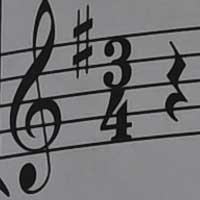 |
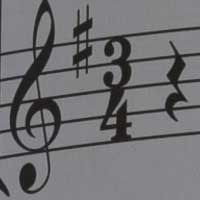 |
|
ISO 64 (100% Crop) |
ISO 64 (100% Crop) |
 |
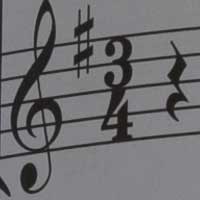 |
|
ISO 100 (100% Crop) |
ISO 100 (100% Crop) |
 |
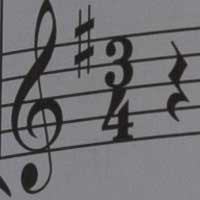 |
|
ISO 200 (100% Crop) |
ISO 200 (100% Crop) |
 |
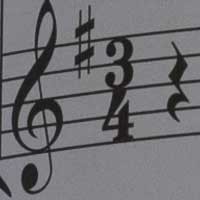 |
|
ISO 400 (100% Crop) |
ISO 400 (100% Crop) |
 |
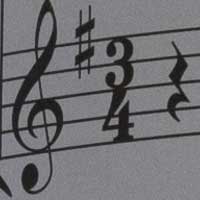 |
|
ISO 800 (100% Crop) |
ISO 800 (100% Crop) |
 |
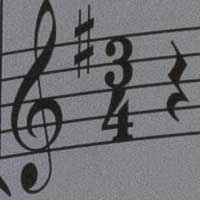 |
|
ISO 1600 (100% Crop) |
ISO 1600 (100% Crop) |
 |
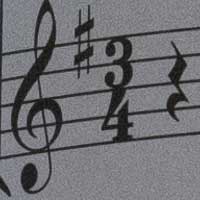 |
|
ISO 3200 (100% Crop) |
ISO 3200 (100% Crop) |
 |
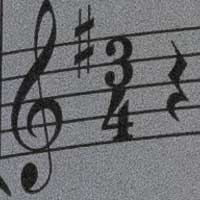 |
|
ISO 6400 (100% Crop) |
ISO 6400 (100% Crop) |
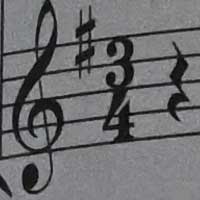 |
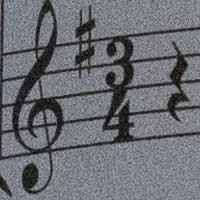 |
|
ISO 12800 (100% Crop) |
ISO 12800 (100% Crop) |
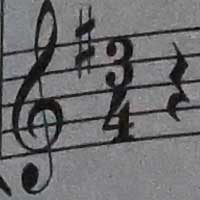 |
 |
|
ISO 25600 (100% Crop) |
ISO 25600 (100% Crop) |
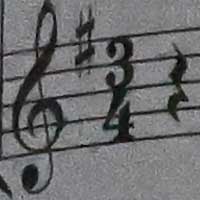 |
 |
|
ISO 51200 (100% Crop) |
ISO 51200 (100% Crop) |
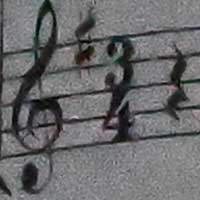 |
 |
|
ISO 102400 (100% Crop) |
ISO 102400 (100% Crop) |
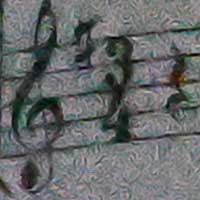 |
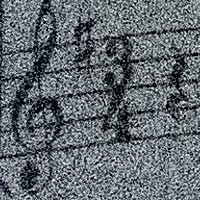 |
File Quality
The Nikon Z9 has two different file options – Raw and JPEG – with three compression options available for Raw and 6 for JPEG. Here are some 100% crops which show the differences between them all, with the full image size shown in brackets.
Night
The Nikon Z9’s maximum shutter speed is 900 seconds in the Manual shooting mode and there’s a Bulb mode for even longer exposures, which is excellent news if you’re seriously interested in low light photography.

Active D-lighting (ADL)
D-lighting is Nikon’s dynamic range optimisation tool that attempts to squeeze the full dynamic range of the sensor into JPEGs. Active D-lighting works “on the fly”, before the in-camera processing engine converts the raw image data into JPEGs. The available settings are Off, Low, Normal, High, Extra High 1 and Extra High 2, plus an Auto mode.
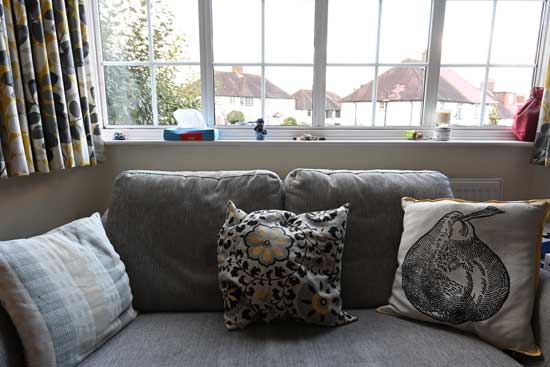
Off

Low
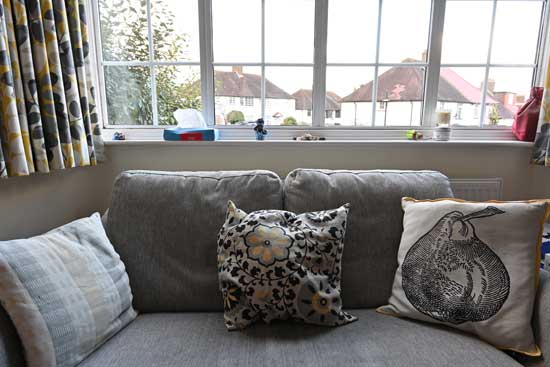
Normal

High

Extra High 1

Extra High 2
HDR
The Nikon Z9’s HDR Mode captures three different exposures and combines them into one, retaining more shadow and highlight detail, with an Auto mode, and four different strengths.
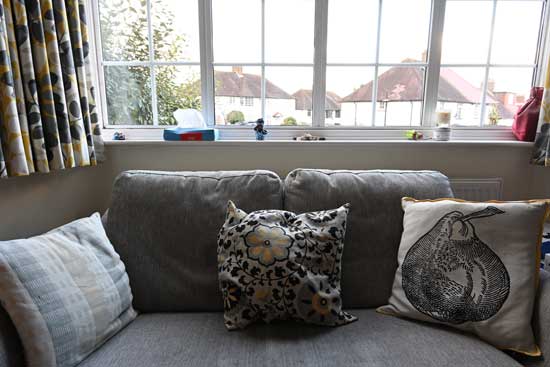
Off
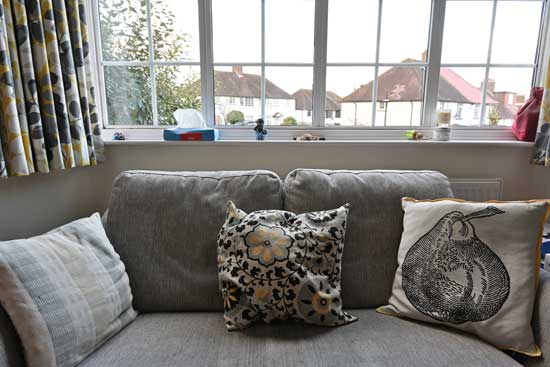
Low
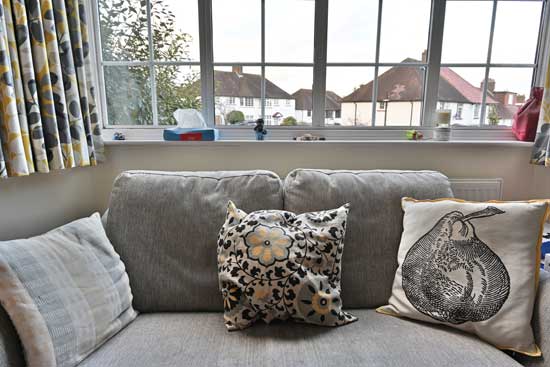
Normal
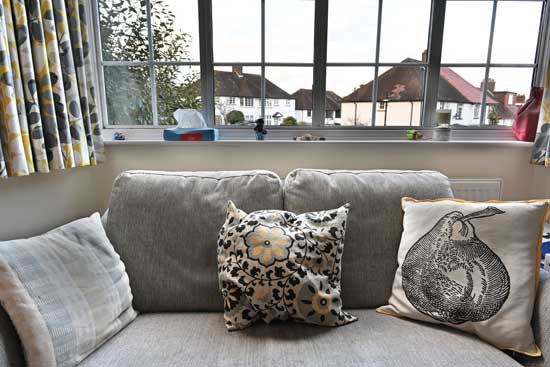
High
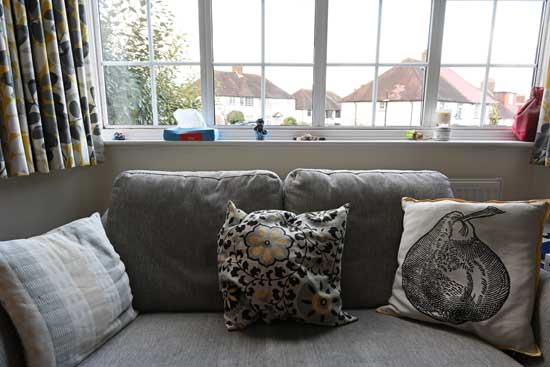
Extra High
Picture Controls
Nikon’s Picture Controls are preset combinations of sharpening, contrast, brightness, saturation and hue. All 28 different Picture Controls can be tweaked to your liking, then saved and transferred to other cameras.
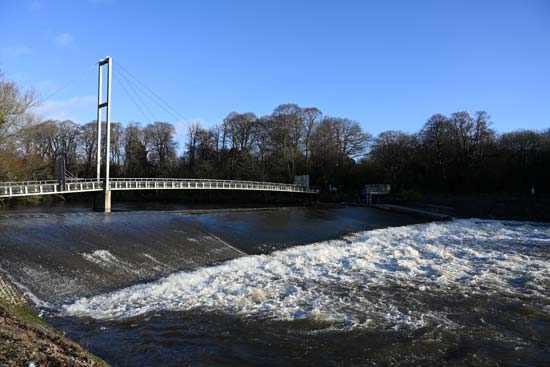
Auto
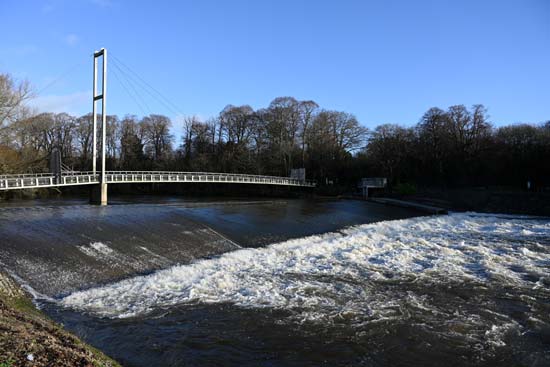
Standard

Neutral

Vivid
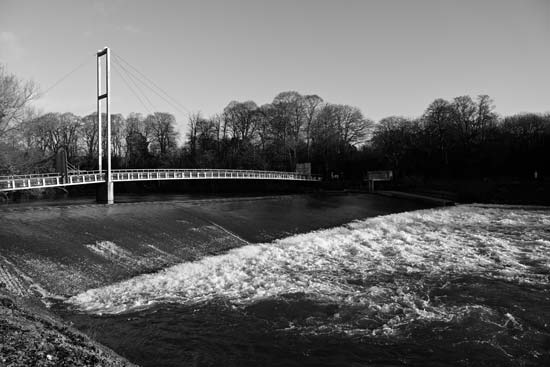
Monochrome
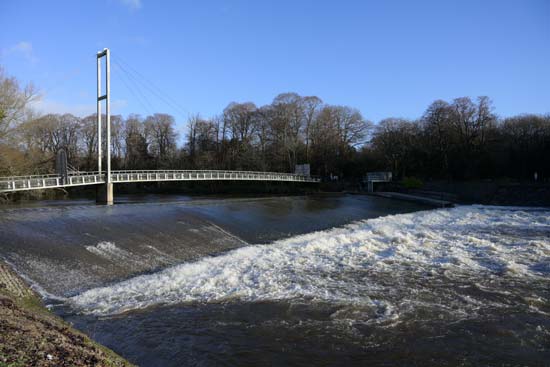
Portrait
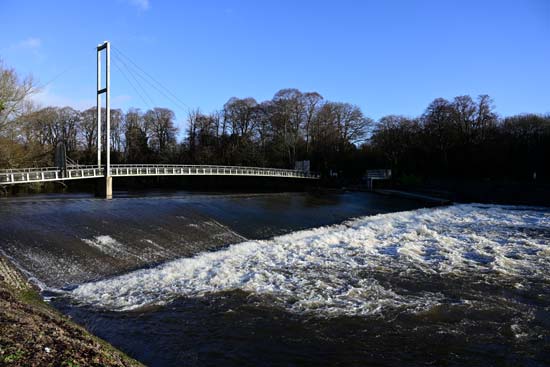
Landscape
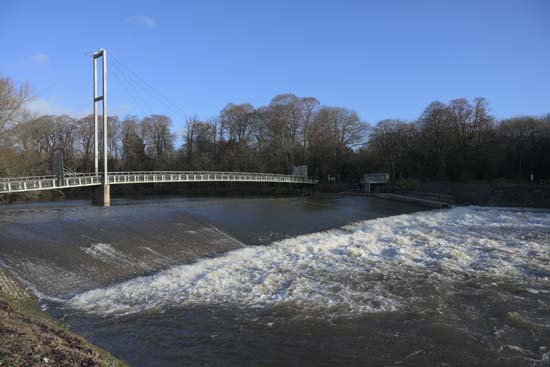
Flat
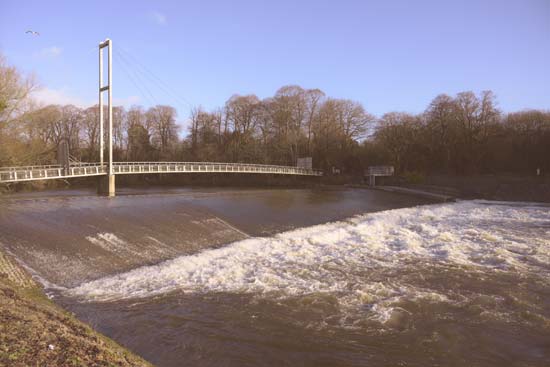
Dream

Morning
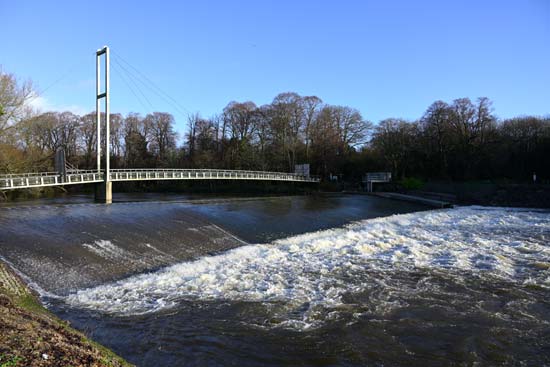
Pop
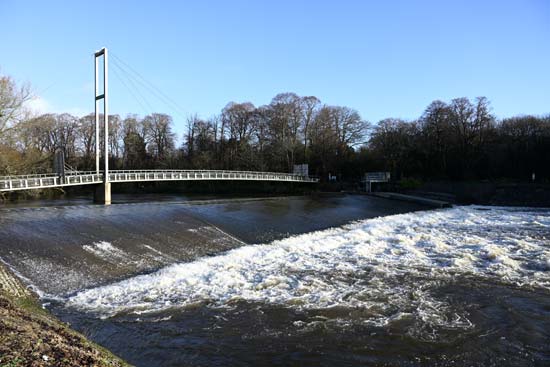
Sunday
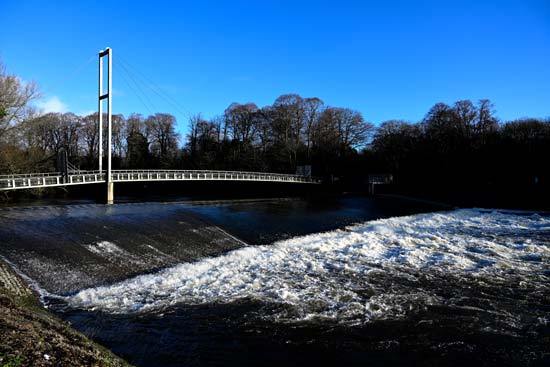
Somber
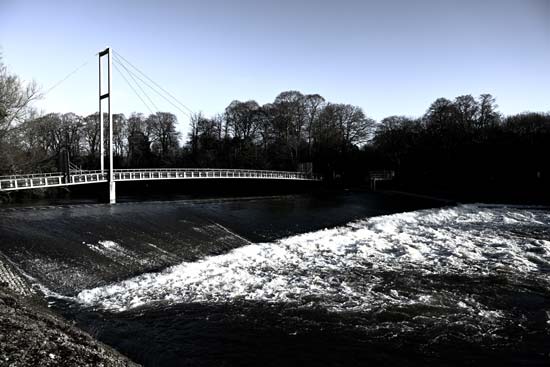
Dramatic
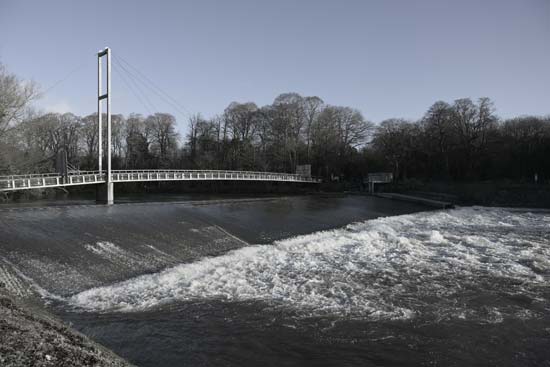
Silence
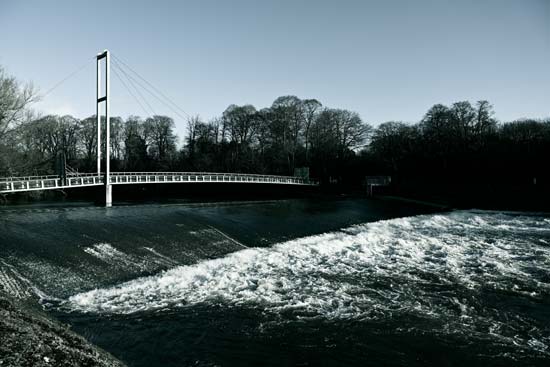
Bleached
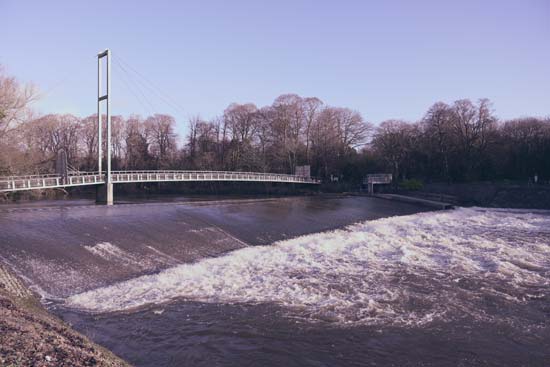
Melancholic
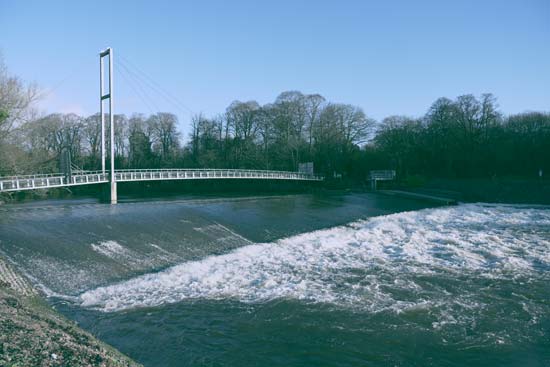
Pure
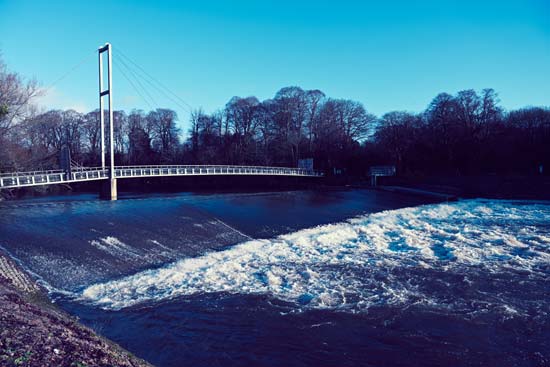
Denim
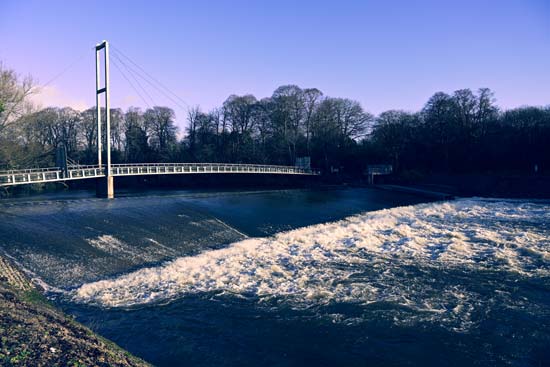
Toy
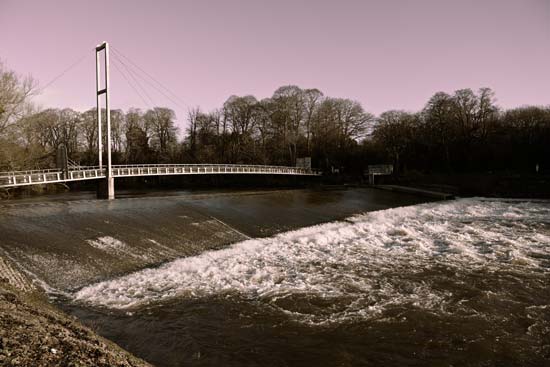
Sepia
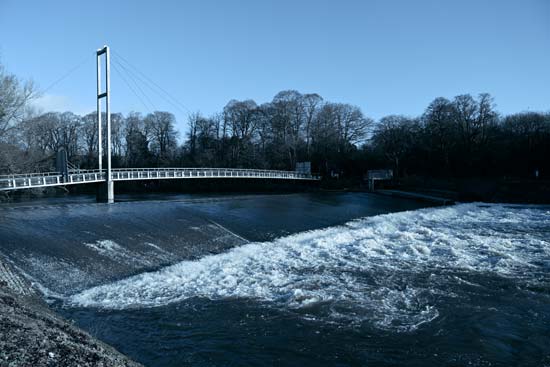
Blue
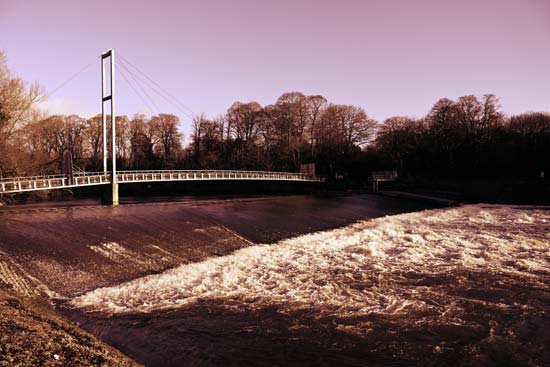
Red
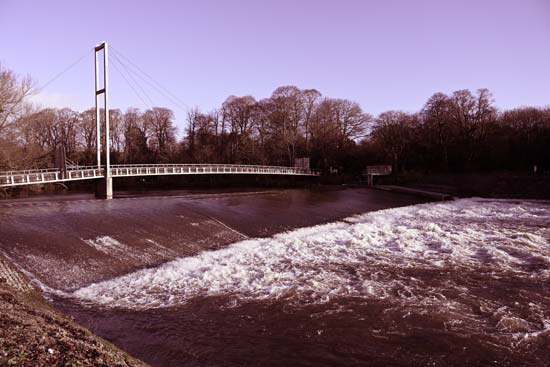
Pink
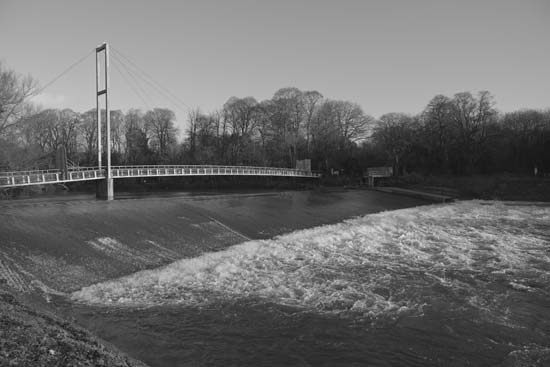
Charcoal
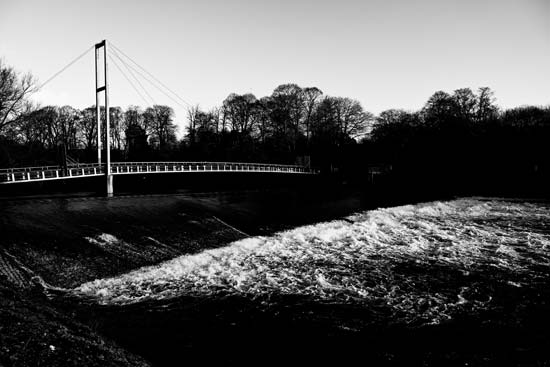
Graphite
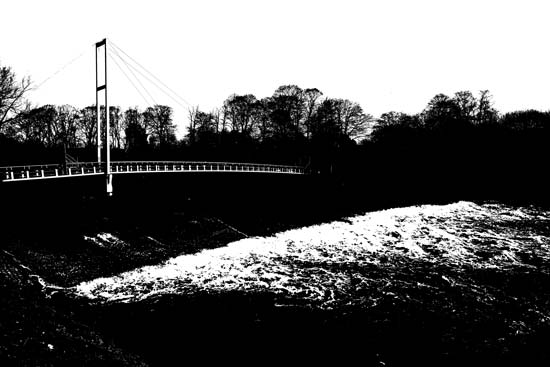
Binary
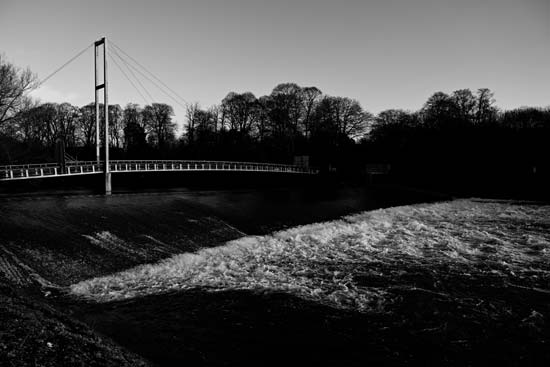
Carbon
Crop Modes
The Nikon Z7 II is an FX camera but it can also shoot in one of three crop modes, including a 19.4-megapixel DX crop mode, a 38.3 megapixel 16:9 mode, and a 30.3-megapixel 1:1 square mode.
The boundaries of the cropped areas are denoted with thin black lines in the viewfinder, which otherwise continues to show the full FX view, allowing you to see what’s happening outside the cropped frame – perfect for sports and action shooting.
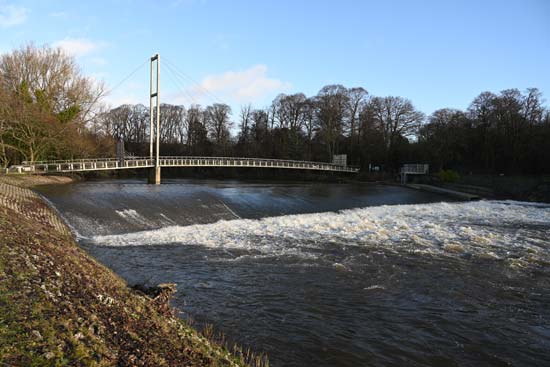
FX
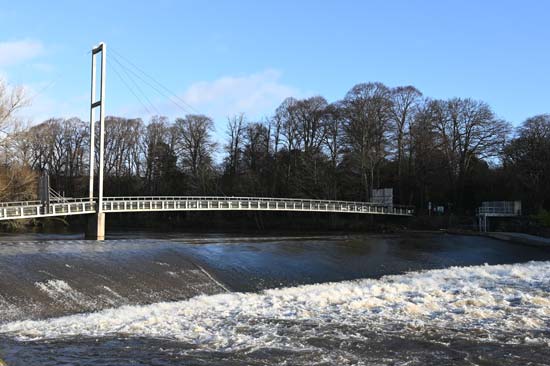
DX
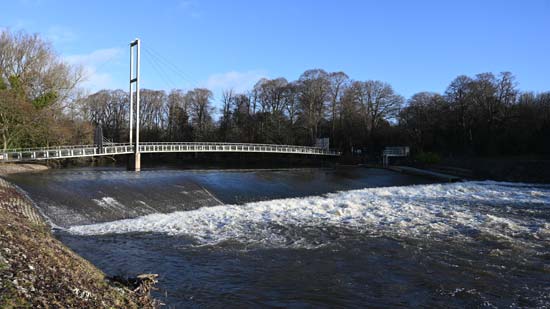
16×9

1×1
Multiple Exposure
The Nikon Z9’s multiple exposure mode allows you to take between two and ten images and merge them into a single photo in-camera.
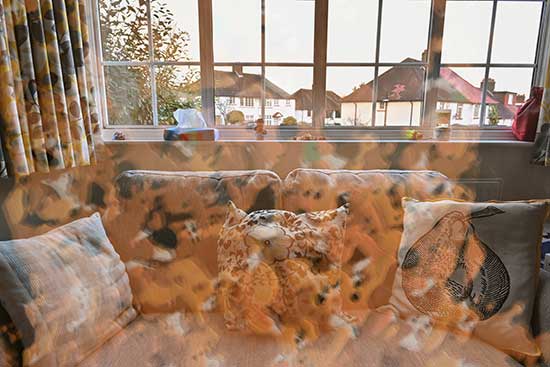
Sample Images
This is a selection of sample images from the Nikon Z9 camera, which were all taken using the 45.7 megapixel Fine* JPEG setting. The thumbnails below link to the full-sized versions, which have not been altered in any way.
Sample RAW Images
The Nikon Z9 enables users to capture RAW and JPEG format files. We’ve provided some Nikon RAW (NEF) samples for you to download (thumbnail images shown below are not 100% representative).”
Sample Movies & Video
This is a sample 8K/30p movie at the quality setting of 7680 × 4320 pixels at 30 frames per second. Please note that this 15 second movie is 746Mb in size.
This is a sample 8K/25p movie at the quality setting of 7680 × 4320 pixels at 25 frames per second. Please note that this 15 second movie is 752Mb in size.
This is a sample 8K/24p movie at the quality setting of 7680 × 4320 pixels at 24 frames per second. Please note that this 16 second movie is 751Mb in size.
This is a sample 4K/120p movie at the quality setting of 3840 × 2160 pixels at 120 frames per second. Please note that this 15 second movie is 756Mb in size.
This is a sample 4K/60p movie at the quality setting of 3840 × 2160 pixels at 60 frames per second. Please note that this 15 second movie is 632Mb in size.
This is a sample 4K/30p movie at the quality setting of 3840 × 2160 pixels at 30 frames per second. Please note that this 16 second movie is 376Mb in size.
This is a sample 1080/120p movie at the quality setting of 1920 × 1080 pixels at 120 frames per second. Please note that this 15 second movie is 362Mb in size.
Product Images


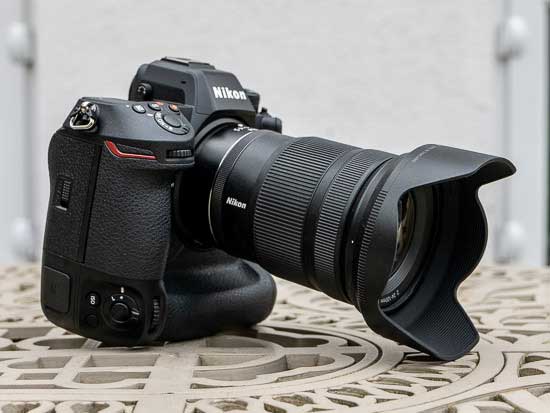


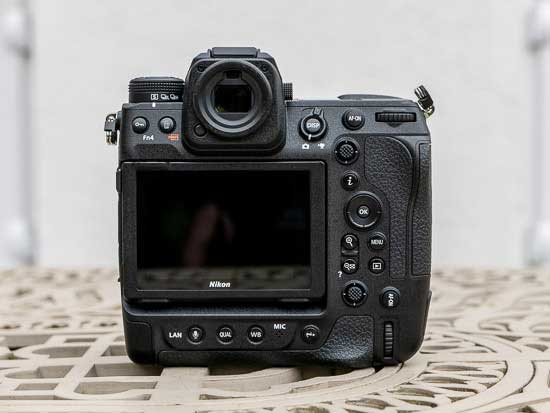

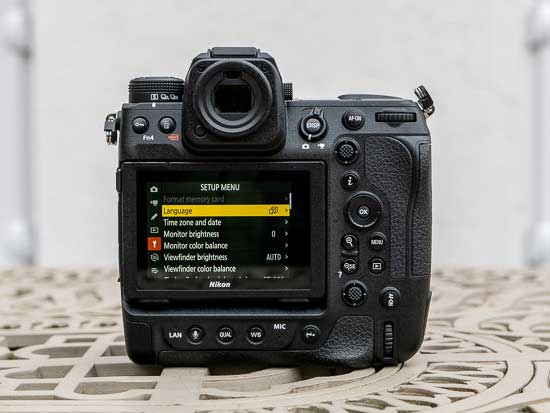
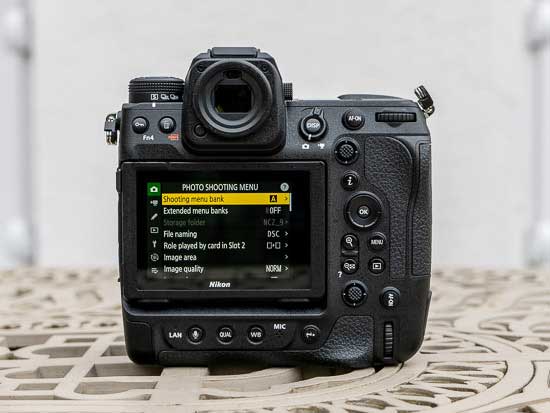
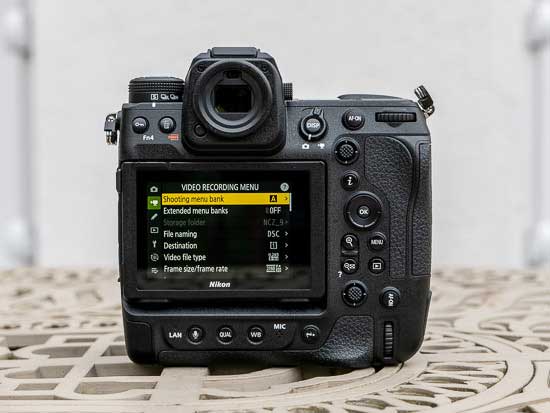
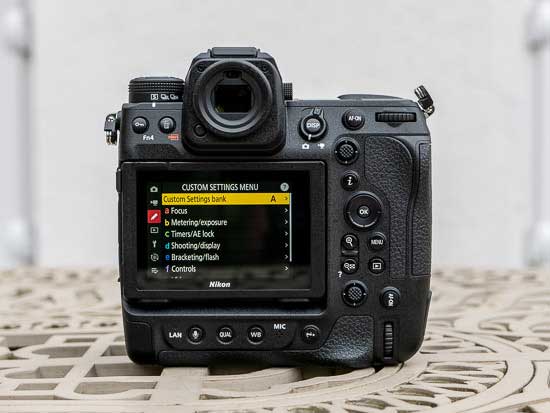
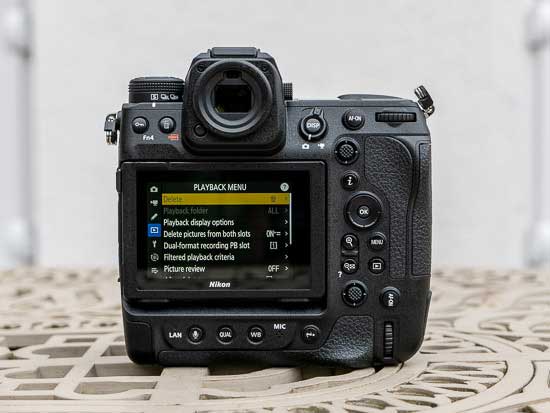
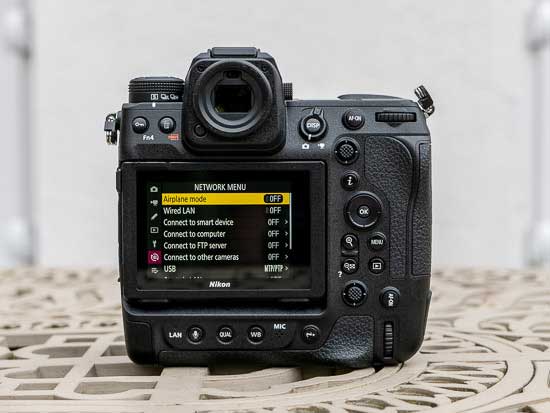
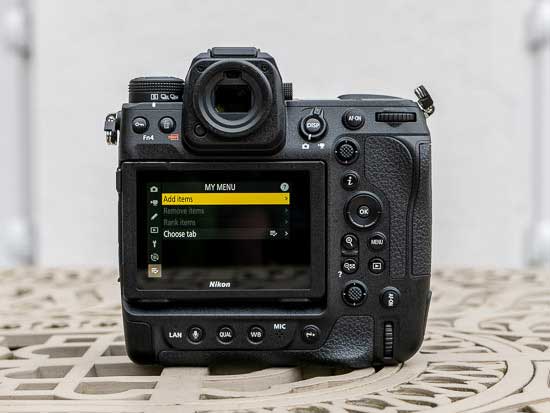
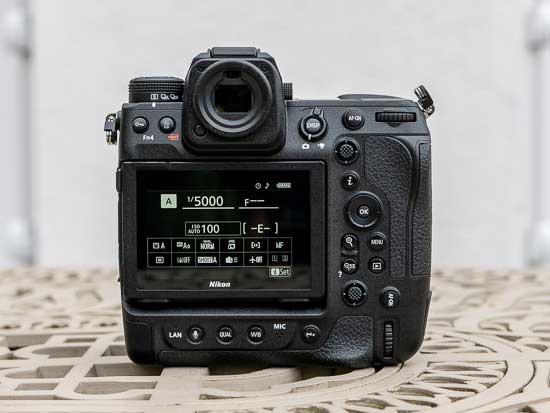

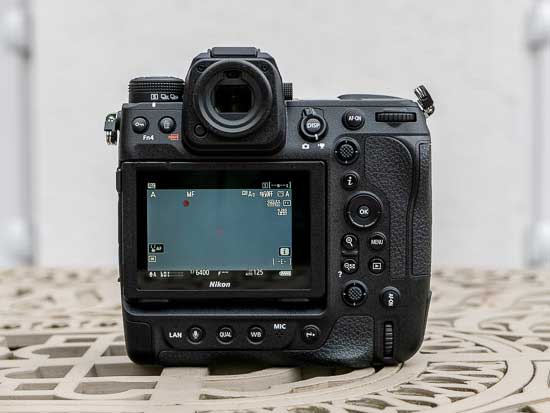
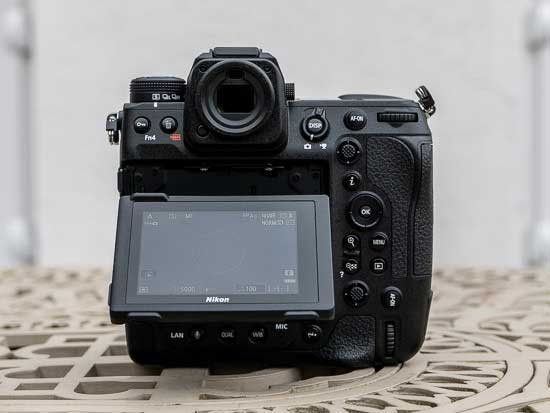
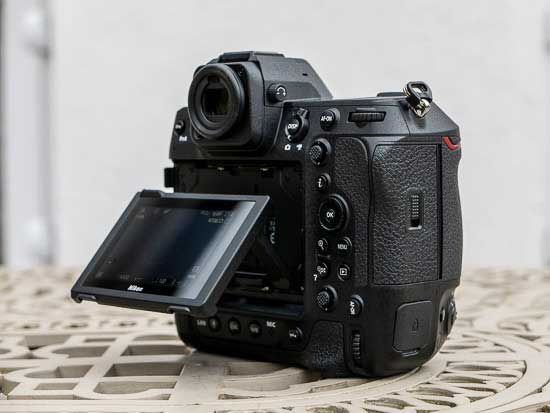


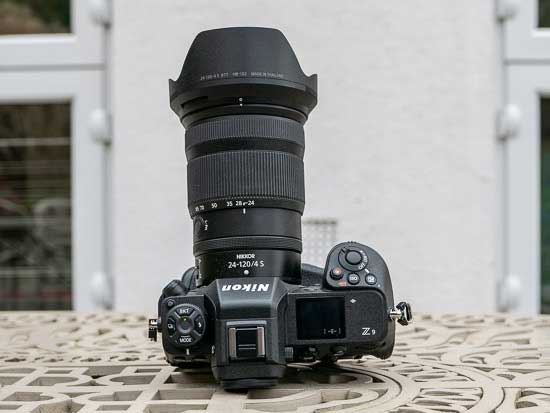
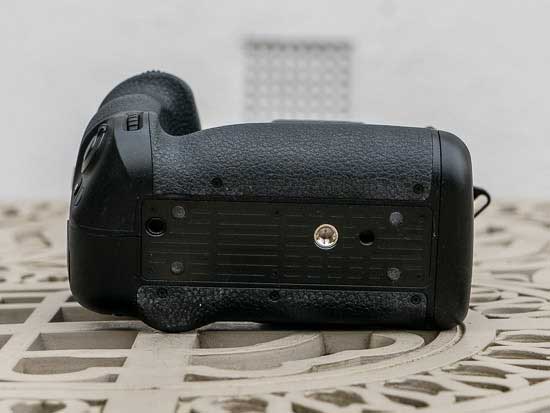



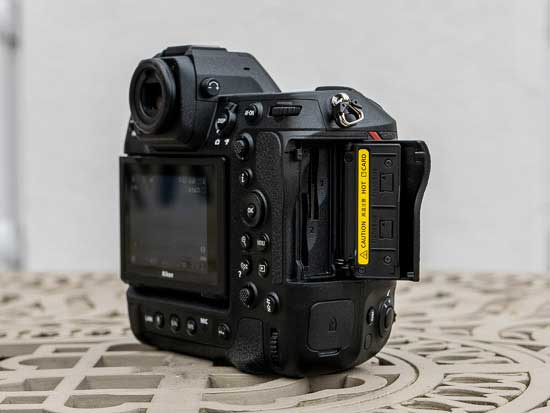



Conclusion
As the spiritual mirrorless successor to the D6 DSLR, the new Z9 surpasses its sibling to become the best camera that Nikon have ever produced, irrespective of what technology lies inside it.
Instantly familiar to anyone who’s used either a higher-end D-series DSLR or Z-series mirrorless model, the Z9 feels like a Nikon on steroids, offering the very best technologies, handling and performance that the company currently has to offer.
It combines the dual-grip design of the D6 series with the control layout of the Z7 II to create a truly remarkable camera for professional sports, wildlife, news and landscape photographers and videographers alike.
The Z9 joins the Sony Alpha 1 as one of only two professional cameras to offer both high resolution and mind-blowing speed, not to mention 8K video. While the EOS R3 can match their 30fps burst speeds and the EOS R5 their resolution and 8K video, Canon haven’t yet released a single camera that covers all three bases, at least until the launch of the EOS R1.
While the Z9 can’t match the Alpha 1 and EOS R3 by shooting Raw files at 30fps, only JPEGs, the fact that it can shoot Raw at 20fps for over 1000 frames in a single burst before the camera slows down is a pretty incredible trick to pull off.
Similarly, the Z9’s electronic viewfinder seems to lag somewhat behind its two main rivals, at least on paper, but the modest 3690k-dot resolution and 60fps refresh rate thankfully don’t automatically translate into a sub-par experience – quite the opposite in fact.
With Nikon seeking to tempt D5 and D6 owners over to the mirrorless world, the viewfinder experience is of paramount importance, and we’re glad to say that OVF-fans should be more than happy with using the Z9’s EVF.
Especially as the Z9 sweetens the mirrorless deal considerably in a lot of important ways, most notably the excellent hybrid image stabilisation worth up to 6-stops, the much faster headline-grabbing 30fps burst shooting, and the completely silent electronic shutter, all housed in a smaller, lighter yet still equally weather-proof and durable body that’s easier to use for extended periods of time.
With superlative low-light AF sensitivity that stretches all the way down to -8.5EV, an extensive range of AI subject-detection and tracking modes, and Nikon’s familiar 3D tracking mode, it’s clear that the Z9 is the best auto-focusing camera that the company has ever produced.
Long revered as the pinnacle of Nikon’s technological prowess, the D6 DSLR has now been surpassed by the Nikon Z9 as the company’s go-to camera for almost anything that moves quickly – people, animals, birds, vehicles – you name it and this camera can intuitively and almost instantly capture it with the absolute minimum of fuss.
What don’t we like about the Nikon Z9? Well, the integrated dual grip design certainly isn’t for everyone – at just over 1kg in weight it remains a camera for the professional user rather than enthusiast, although we bet that many of the latter would enjoy using the Z9, particularly if they routinely fit a battery grip to their current camera.
The new Synchro VR mode currently only works with three lenses, and the Z9’s lack of mechanical shutter means that it can’t quite match the D6’s 1/250th flash sync speed, although it comes surprisingly close. And that’s about it!
When Sony released the all-conquering Alpha 1 in early 2021, many predicted the imminent demise of Nikon, or at the very least a reshuffling of the camera manufacturer pack, but the new Z9 proves beyond doubt that Nikon are back at the top of their game.
Nikon have also surprised many by not only releasing such a capable camera, but giving it a price-tag that’s much less than its main rivals – around £$1000 less than the Sony A1 if you added a battery pack to match the Z9’s form factor, and around £$500 less then the lower-resolution EOS R3.
Overall, Nikon have hit the proverbial ball out of the park with the new Z9 in virtually every respect, easily earning it our coveted Essential! award.
| Ratings (out of 5) | |
|---|---|
| Design | 4.5 |
| Features | 5 |
| Ease-of-use | 4.5 |
| Image quality | 5 |
| Value for money | 5 |
Main Rivals
Listed below are some of the rivals of the Nikon Z9.
The Canon EOS R3 is a professional full-frame mirrorless camera for sports and action photographers that features a 24 megapixel stacked BSI sensor, 6K/60p Raw and 4K/120p video recording, 30fps burst shooting, eye-control autofocusing and a dual-grip design. Read our in-depth Canon R3 review complete with full-size sample photos and videos to find out just what the all-action R3 is capable of…
The Nikon Z7 II full-frame mirrorless camera is the 2020 update of the original Z7 model, principally improving the autofocusing, buffer and video and adding a second memory card slot. Are these changes enough for it to compete with its main rivals like the Sony A7R IV and the Canon EOS R5? Find out now by reading our in-depth Nikon Z7 II review, complete with full size sample photos and videos…
The Sony Alpha 1 camera, or Sony A1 for short, is the best camera that Sony have ever released, and currently the best all-round camera on the market. It’s also one of the most expensive, so read our in-depth Sony A1 review complete with full-size sample JPEG and Raw photos and movies to find out if it’s truly the One for you…
If you’re a professional sports photographer or photojournalist, there have traditionally only been two camera series worth considering, with the latest examples being the Canon EOS 1D X II and the Nikon D5. Two years ago Sony released the Alpha A9, which was specifically designed to take on those two cameras, and now they’re back, just in time for the Olympics, with the improved A9 II. Read our review to find out exactly what the new Sony Alpha A9 Mark II offers…
Review Roundup
Reviews of the Nikon Z9 from around the web.
The Nikon Z 9 is Nikon’s flagship professional full-frame mirrorless camera. It’s capable of shooting 45.7MP images at 20 frames per second in raw, or 30fps in JPEG, with continuous autofocus tracking. A new AI subject detection AF system is capable of recognising multiple kinds of subjects, and the camera can also record 8K video. Boasting professional build quality and control, the Nikon Z 9 costs £5,299 body-only.
Read the full review »
Specifications
|
Type |
Mirrorless |
|---|---|
|
Lens mount |
Nikon Z mount |
|
Image sensor |
FX, CMOS, 35.9 mm x 23.9 mm |
|
Total pixels |
52.37 million |
|
Dust-reduction system |
Image sensor cleaning, Image Dust Off reference data (requires NX Studio) |
|
Effective pixels |
45.7 million |
|
Image size (pixels) |
[FX (36 x 24)] selected for image area: (L) 8256 x 5504 (45.4 million), (M) 6192 x 4128 (25.6 million), (S) 4128 x 2752 (11.4 million), [DX (24 x 16)] selected for image area: (L) 5392 x 3592 (19.4 million), (M) 4032 x 2688 (10.8 million), (S) 2688 x 1792 (4.8 million), [1:1 (24 x 24)] selected for image area: (L) 5504 x 5504 (30.3 million), (M) 4128 x 4128 (17.0 million), (S) 2752 x 2752 (7.6 million), [16:9 (36 x 20)] selected for image area: (L) 8256 x 4640 (38.3 million), (M) 6192 x 3480 (21.5 million), (S) 4128 x 2320 (9.6 million) |
|
Storage file formats |
NEF (RAW): 14 bit; choose from lossless compression, high efficiency (high), and high efficiency options, JPEG: JPEG-Baseline compliant with fine (approx. 1:4), normal (approx. 1:8), or basic (approx. 1:16) compression; size-priority and optimal-quality compression available, NEF (RAW)+JPEG: Single photograph recorded in both NEF (RAW) and JPEG formats |
|
Picture Control System |
Auto, Standard, Neutral, Vivid, Monochrome, Portrait, Landscape, Flat, Creative Picture Controls (Dream, Morning, Pop, Sunday, Somber, Dramatic, Silence, Bleached, Melancholic, Pure, Denim, Toy, Sepia, Blue, Red, Pink, Charcoal, Graphite, Binary, Carbon); selected Picture Control can be modified; storage for custom Picture Controls |
|
Storage media |
CFexpress XQD |
|
Dual card slot |
2 CFexpress cards or XQD cards, The card in Slot 2 can be used for overflow or backup storage, for separate storage of NEF (RAW) and JPEG pictures, or for storage of duplicate JPEG pictures at different sizes and image qualities; pictures can be copied between cards. |
|
File system |
DCF 2.0, Exif 2.32 |
|
Viewfinder |
1.27-cm/0.5-in. approx. 3690k-dot (Quad VGA) OLED electronic viewfinder with color balance and auto and 16-level manual brightness controls |
|
Frame coverage |
Approx. 100% horizontal and 100% vertical |
|
Magnification |
Approx. 0.8x (50 mm lens at infinity, -1.0 m-¹) |
|
Eyepoint |
23 mm (-1.0 m-¹; from rearmost surface of viewfinder eyepiece lens) |
|
Diopter adjustment |
-4 – +3 m-¹ |
|
Eye sensor |
Automatically switches between monitor and viewfinder displays |
|
Compatible lenses |
Z mount NIKKOR lenses F mount NIKKOR lenses (mount adapter required; restrictions may apply) |
|
Shutter type |
Electronic shutter with shutter sound and sensor shield |
|
Shutter speed |
1/32000 to 30 s (choose from step sizes of 1/3, 1/2, and 1 EV, extendable to 900 s in mode M), bulb, time |
|
Flash sync speed |
Flash synchronizes with shutter at speeds of 1/250 or 1/200 s or slower (but note that the guide number drops at speeds of 1/200 to 1/250 s); sync speeds as fast as 1/8000 s are supported with auto FP high-speed sync *Depending on the shutter speed, horizontal lines may appear in pictures when using auto FP high-speed sync. |
|
Release mode |
S (single frame), CL (continuous low-speed), CH (continuous high-speed), High-speed frame capture, Self-timer |
|
Frame advance rate12 |
Up to 120 fps, Continuous low-speed: Approx. 1 to 10 fps, Continuous high-speed: Approx. 10 to 20 fps, High-speed frame capture (C30): Approx. 30 fps, High-speed frame capture (C120): Approx. 120 fps |
|
Self-timer |
2 s, 5 s, 10 s, 20 s; 1 to 9 exposures at intervals of 0.5, 1, 2, or 3 s |
|
Exposure metering |
TTL metering using camera image sensor |
|
Metering method |
Matrix metering, Center-weighted metering: Weight of 75% given to 12 or 8 mm circle in center of frame or weighting can be based on average of entire frame, Spot metering: Meters circle with a diameter of approximately 4mm centered on selected focus point, Highlight-weighted metering |
|
Metering range13 |
-3 to +17 EV |
|
Mode |
P: programmed auto with flexible program, S: shutter-priority auto, A: aperture-priority auto, M: manual |
|
Exposure compensation |
-5 to +5 EV (choose from step sizes of 1/3 and 1/2 EV) |
|
Exposure lock |
Luminosity locked at detected value |
|
ISO sensitivity |
ISO 64 to 25600, in steps of 1/3 and 1EV, can also be set to approx. 0.3, 0.7, or 1 EV (ISO 32 equivalent) below ISO 64 or to approx. 0.3, 0.7, 1, or 2 EV (ISO 102400 equivalent) above ISO 25600; auto ISO sensitivity control available (Recommended Exposure Index) |
|
Active D-Lighting |
Auto, Extra high 2, Extra high 1, High, Normal, Low, and Off |
|
Multiple exposure |
Add, average, lighten, darken |
|
Other options |
HDR overlay, photo mode flicker reduction |
|
Autofocus |
Hybrid phase-detection/contrast AF with AF assist |
|
Detection range14 |
-6.5 to +19 EV (-8.5 to +19 EV with starlight view) |
|
Lens servo |
Single-servo AF (AF-S), Continuous-servo AF (AF-C), full-time AF (AF-F; available only in video mode); predictive focus tracking, Manual focus (M): Electronic rangefinder can be used |
|
Focus points15 |
493 |
|
AF-area mode |
Pinpoint (available in photo mode only), single-point, dynamic-area (S, M, and L; available in photo mode only), wide-area (S and L), and auto-area AF, 3D-tracking (available in photo mode only), subject-tracking AF (available in video mode only) |
|
Focus lock |
Focus can be locked by pressing shutter-release button halfway (single-servo AF/AF-S) or by pressing the center of the sub-selector |
|
Camera VR |
5-axis image sensor shift |
|
Lens VR |
Lens shift (available with VR lenses) |
|
Flash control |
TTL: i-TTL flash control; i-TTL balanced fill-flash is used with matrix, center-weighted, and highlight-weighted metering, standard i-TTL fill-flash with spot metering |
|
Flash modes |
Front-curtain sync, slow sync, rear-curtain sync, red-eye reduction, red-eye reduction with slow sync, off |
|
Flash compensation |
-3 to +1 EV in steps of 1/3 or 1/2 EV |
|
Flash-ready indicator |
Lights when optional flash unit is fully charged; flashes as underexposure warning after flash is fired at full output |
|
Accessory shoe |
ISO 518 hot-shoe with sync and data contacts and safety lock |
|
Nikon Creative Lighting System |
i-TTL flash control, radio-controlled Advanced Wireless Lighting, optical Advanced Wireless Lighting, modeling illumination, FV lock, Color Information Communication, auto FP high-speed sync, unified flash control |
|
Sync terminal |
ISO 519 sync terminal with locking thread |
|
White balance |
Auto (3 types), natural light auto, direct sunlight, cloudy, shade, incandescent, fluorescent (3 types), flash, choose color temperature (2500 to 10,000 K), preset manual (up to 6 values can be stored), all with fine-tuning |
|
Bracketing types |
Exposure and/or flash, white balance, ADL |
|
Movie – metering |
TTL exposure metering using main image sensor, TTL metering using camera image sensor |
|
Movie – metering method |
Matrix, center-weighted, or highlight-weighted |
|
Movie – frame size (pixels) and frame rate16 |
7680 x 4320 (8K UHD): 30p (progressive)/25p/24p, 3840 x 2160 (4K UHD): 120p/100p/60p/50p/30p/25p/24p, 1920 x 1080: 120p/100p/60p/50p/30p/25p/24p |
|
Movie – file format |
MOV, MP4 |
|
Movie – video compression |
Apple ProRes 422 HQ (10 bit), H.265/HEVC (8 bit/10 bit), H.264/AVC (8 bit) |
|
Movie – audio recording format |
Linear PCM (for videos recorded in MOV format), AAC (for videos recorded in MP4 format) |
|
Movie – audio recording device |
Built-in stereo or external microphone with attenuator option; sensitivity adjustable |
|
Movie – exposure compensation |
-3 to +3 EV (choose from step sizes of 1/3 and 1/2 EV) |
|
Movie – ISO sensitivity |
Mode M: Manual selection (ISO 64 to 25600; choose from step sizes of 1/3 and 1 EV); with additional options available equivalent to approximately 0.3, 0.7, 1, or 2 EV (ISO 102400 equivalent) above ISO 25600; auto ISO sensitivity control (ISO 64 to Hi 2.0) available with selectable upper limit, Modes P, S, A: Auto ISO sensitivity control (ISO 64 to Hi 2.0) with selectable upper limit (Recommended Exposure Index) |
|
Movie – Active D-Lighting |
Extra high, High, Normal, Low, and Off |
|
Movie – Other options |
Time-lapse video recording, electronic vibration reduction, time codes, N-Log and HDR (HLG) video |
|
Monitor |
8-cm (3.2–in.) diagonal; vertically and horizontally tilting TFT touch-sensitive LCD with 170° viewing angle, approximately 100% frame coverage, and color balance and 11-level manual brightness controls; Approx. 2100k-dot |
|
Playback |
Full-frame and thumbnail (up to 4, 9, or 72 pictures) playback with playback zoom, playback zoom cropping, video playback, histogram display, highlights, photo information, location data display, auto picture rotation, picture rating, voice memo input and playback, and IPTC information embedding and display |
|
USB |
Type C USB connector (SuperSpeed USB); connection to built-in USB port is recommended |
|
HDMI output |
Type A HDMI connector |
|
Audio input |
Stereo mini-pin jack (3.5 mm diameter; plug-in power supported) |
|
Audio output |
Stereo mini-pin jack (3.5 mm diameter) |
|
Ten-pin remote terminal |
Built-in (can be used with MC-30A/MC-36A remote cords and other optional accessories) |
|
Ethernet |
RJ-45 connector Standards: IEEE 802.3ab (1000BASE-T), IEEE 802.3u (100BASE-TX), IEEE 802.3 (10BASE-T) Data rates17: 1000/100/10 Mbps with auto detect, Port: 1000BASE-T/100BASE-TX/10BASE-T (AUTO-MDIX) |
|
Wi-Fi (Wireless LAN) standards |
IEEE 802.11b/g/n/a/ac |
|
Wi-Fi (Wireless LAN) operating frequency |
2412 to 2462 MHz (channel 11) and 5180 to 5320 MHz |
|
Wi-Fi (Wireless LAN) maximum output power |
2.4 GHz band: 8.4 dBm 5 GHz band: 9.0 dBm |
|
Wi-Fi (Wireless LAN) security |
Open system, WPA2-PSK, WPA3-SAE |
|
Bluetooth standards |
Bluetooth Specification version 5.0, Bluetooth: 2402 to 2480 MHz, Bluetooth Low Energy: 2402 to 2480 MHz, Bluetooth: 2.9 dBm, Bluetooth Low Energy: 1.4 dBm, Range (line of sight): approximately 10 m (32 ft)18 |
|
Supported GNS systems |
GPS (USA), GLONASS (Russia), QZSS (Japan) |
|
Data acquired |
Latitude, longitude, altitude, UTC (Universal Coordinated Time) |
|
Clock synchronization |
Camera clock can be set to time acquired via GNSS |
|
Track logs |
NMEA-compliant |
|
Log interval |
15 s, 30 s, 1 min., 2 min., 5 min. |
|
Maximum log recording time |
6, 12, or 24 hours |
|
Log deletion |
Supported |
|
Battery |
One EN-EL18d rechargeable Li-ion battery, EN-EL18c, EN-EL18b, EN-EL18a, and EN-EL18 batteries can also be used. Note, however, that fewer pictures can be taken on a single charge than with the EN-EL18d. The EH-7P charging AC adapter can be used to charge EN-EL18d, EN-EL18c, and EN-EL18b batteries only. |
|
AC adapter |
EH-7P charging AC adapter; EH-6d; requires EP-6a power connector (available separately) |
|
Tripod socket |
0.635 cm (1/4 in., ISO 1222) |
|
Dimensions (W x H x D) |
Approx. 149 x 149.5 x 90.5 mm (5.9 x 5.9 x 3.6 in.) |
|
Weight |
Approx. 1340 g (2 lb. 15.3 oz.), with battery and memory card but without body cap and accessory shoe cover; approx. 1160 g/2 lb. 9 oz. (camera body only) |
|
Operating environment – temperature |
-10 °C to 40 °C (+14 °F to 104 °F) |
|
Operating environment – humidity |
85% or less (no condensation) |
|
Supplied accessories |
BF-N1 Body Cap, EN-EL18d Rechargeable Li-ion Battery with Terminal Cover, MH-33 Battery Charger, EH-7P Charging AC Adapter (supplied with a plug adapter attached in countries or regions where required; shape depends on country of sale), HDMI/USB Cable Clip, AN-DC24 Strap, UC-E24 USB Cable, BS-1 Accessory Shoe Cover (comes attached to camera) |
¹ You can shoot at C120 (120 fps, 11 MP, JPEG normal/small) in FX format only. You can shoot at C30 (30 fps, 45MP, JPEG normal/large) and at 20 fps (RAW and JPEG) in FX or DX format. Full AF/AE tracking is available for all frame rates and file sizes.
² 1000 full-resolution images at 20 fps (RAW and JPEG) in FX or DX format in one burst can be achieved when using ProGrade Digital Cobalt CFexpress cards (as per October 2021).
³ Among full-frame mirrorless cameras as of October 2021. Based on Nikon research.
⁴ Working remotely with a single Z 9 tethered to a smartphone requires use of Nikon’s NX MobileAir software application. Working remotely with multiple cameras via a tethered 4G/5G network requires use of the NX Field software application.
⁵ The Z 9 can record 8K/30p video for up to 125 minutes at a time.
⁶ A firmware update (available spring 2022) is required to enable in-camera 8K/60p video recording.
⁷ Recording in N-RAW is only possible following a firmware update (available spring 2022).
⁸ Recording in ProRes RAW HQ is only possible following a firmware update (available spring 2022).
⁹ 4K UHD video oversampled from 8K is possible when recording in 30p/25p/24p. A firmware update (available spring 2022) is required to oversample from 8K when recording in 50p/60p footage.
¹⁰ 8K still frames are saved as JPEG files at the [frame size/frame rate] dimensions selected in the video recording menu when the video was recorded.
¹¹ Based on CIPA standards.
¹² Maximum frame advance rate as measured by in-house tests.
¹³ Figures are for ISO 100 and f/2.0 lens at 20 °C/68 °F.
¹⁴ Measured in photo mode at ISO 100 and a temperature of 20 °C/68 °F using single-servo AF (AF-S) and a lens with a maximum aperture of f/1.2.
¹⁵ Number of focus points available in photo mode with single-point AF selected for AF-area mode and FX selected for image area.
¹⁶ Actual frame rates for 120p, 100p, 60p, 50p, 30p, 25p, and 24p are 119.88, 100, 59.94, 50, 29.97, 25, and 23.976 fps respectively.
¹⁷ Maximum logical data rates according to IEEE standard; actual rates may differ.
¹⁸ Without interference. Range may vary with signal strength and presence or absence of obstacles.
News
The Nikon Z9 has just been unveiled, a new flagship 35mm full-frame mirrorless camera that will sit above the Z7 II and Z6 II in Nikon’s Z-series range.
Update October 27th 2021: Nikon Europe have just released the fourth and final Nikon Z9 teaser video, ahead of the final announcement on October 28th.
The first and second teaser videos showcase the Z9’s 8K DCI (8192 x 4320) capabilities, including the exciting fact that it can record that 8K DCI video for at least 1 hour and 20 minutes with no over-heating (and possibly even longer than that).
The videos also seem to show off the upcoming Nikkor Z 100-400mm S, one of the most hotly anticipated lenses on Nikon’s lens roadmap.
The third teaser confirms that the Z9 will have an Eye AF mode and a Motorsports AF mode for both two and four wheeled vehicles, shooting at a burst rate of around 20fps.
The fourth teaser video showcases the Z9’s electronic viewfinder, which seems to be completely blackout free whilst running at 120fps. The new Nikkor Z 100-400mm S lens also makes another, more prominent appearance.
The professional level Z9 will feature the Z-mount and have a newly developed FX-format stacked CMOS sensor and a new image-processing engine, although there’s no word yet on either the number of megapixels or the burst shooting rates that it will offer.
It will also feature 8K video recording, the first time that any Nikon camera has done so, which allows the Z9 to challenge the likes of the Canon EOS R5 and the Sony Alpha 1, the only other mirrorless cameras that currently provide 8K recording.
The use of a stacked sensor design and inclusion of 8K video strongly suggests that the Z9 will use the same sensor found in the Sony Alpha 1 (as Sony supplies Nikon’s image sensors).
In a design move that will likely split opinion, the Z9 features a built-in vertical grip with an array of replicated controls, much like the Nikon D6 DSLR. It will therefore be significantly larger than both the Z7 II and Z6 II, which share the same size and control layout and which instead use an optional battery grip.
Indeed, from the front at least, the two cameras look pretty similar, so the Z9 looks set to replicate the D6 as the best camera that Nikon can possibly make, just this time without a mirror.
It might even exceed the performance of the D6, as Nikon have publicly stated that the Z9 will “deliver the best still and video performance in Nikon history” and that it offers an “unprecedented experience in terms of outstanding performance and operability, and exceeds that of previous digital-SLR and mirrorless cameras.” We can’t wait to try it out!
But wait we must, as although the Nikon Z9 is scheduled for release in 2021, it’s still currently in development and the exact timing will only be announced at a later date – so probably best to expect mid-late 2021 then, maybe even in time for the Tokyo Olympics in July…
Specifications
As is typical of development announcements, Nikon have been incredibly tight-lipped about what the Z9 will actually be capable of.
The new stacked sensor hints strongly at fast burst shooting, though, probably on a par with the insane 30fps speeds that the Sony A1 offers.
It will definitely have 8K recording and, in Nikon’s own words, “various other video specifications that fulfill diverse needs and workflows”, so expect a raft of different bit rates, codecs and profiles that will satisfy the needs of the most demanding cinematographers.
As it offers 8K video, the sensor’s megapixel count will be in excess of 35.6million effective pixels, as that’s the minimum required for 8K.
Release Date
Nikon haven’t officially set a release date for the new Z9 yet, but with the Tokyo Olympic Games on the near horizon, we’d hope that this new flagship sports and video camera would make its debut in time for professionals to capture all the action at the world’s premier sporting event.
Price
The price of the Nikon Z9 has not yet been revealed, but with the equivalent D6 DSLR camera costing £6,300 / $6,500, the new Z9 mirrorless camera will likely be priced at the same level, or even slightly more if it truly does deliver better image quality and performance than the D6.
Also, the Sony Alpha 1 retails for around £6,500 / $6,500, so we wouldn’t be at all surprised if the Z9 was similarly priced to one of its main rivals.
Image Gallery
Click on a thumbnail to see the full version.



